Story and photos by Jonathan Sharp
June 21-23, 2019 Heveningham Hall, UK —“What is your business here?” thus spoke the larger of the two assault-rifle-toting-military personal as we arrived at the main gate of the location. I wondered if he’d be ok with VeloceToday credentials.
Fortunately, the two guards let us in to embark upon a bit of a tour. Like most concours events these days the Heveningham Hall concours weekend starts on Friday morning with a short journey into the past. This year the theme was the ‘Cold War.’ The entrants were to drive around the country lanes and coastal towns of Suffolk before arriving at RAF Bentwaters, a now disused USAF Cold War air base. The route brings us to the hardened shelters that once stored nuclear weapons. More guards were on watch towers and more interrogation at second security gate, but all is well, as it was just part of the theme and the guards were just actors and very friendly. The Cold War theme continued with a Russian-style picnic where caviar is served. A helicopter landed, and out stepped Vladimir Putin, or his body double. It certainly looked a lot like him.
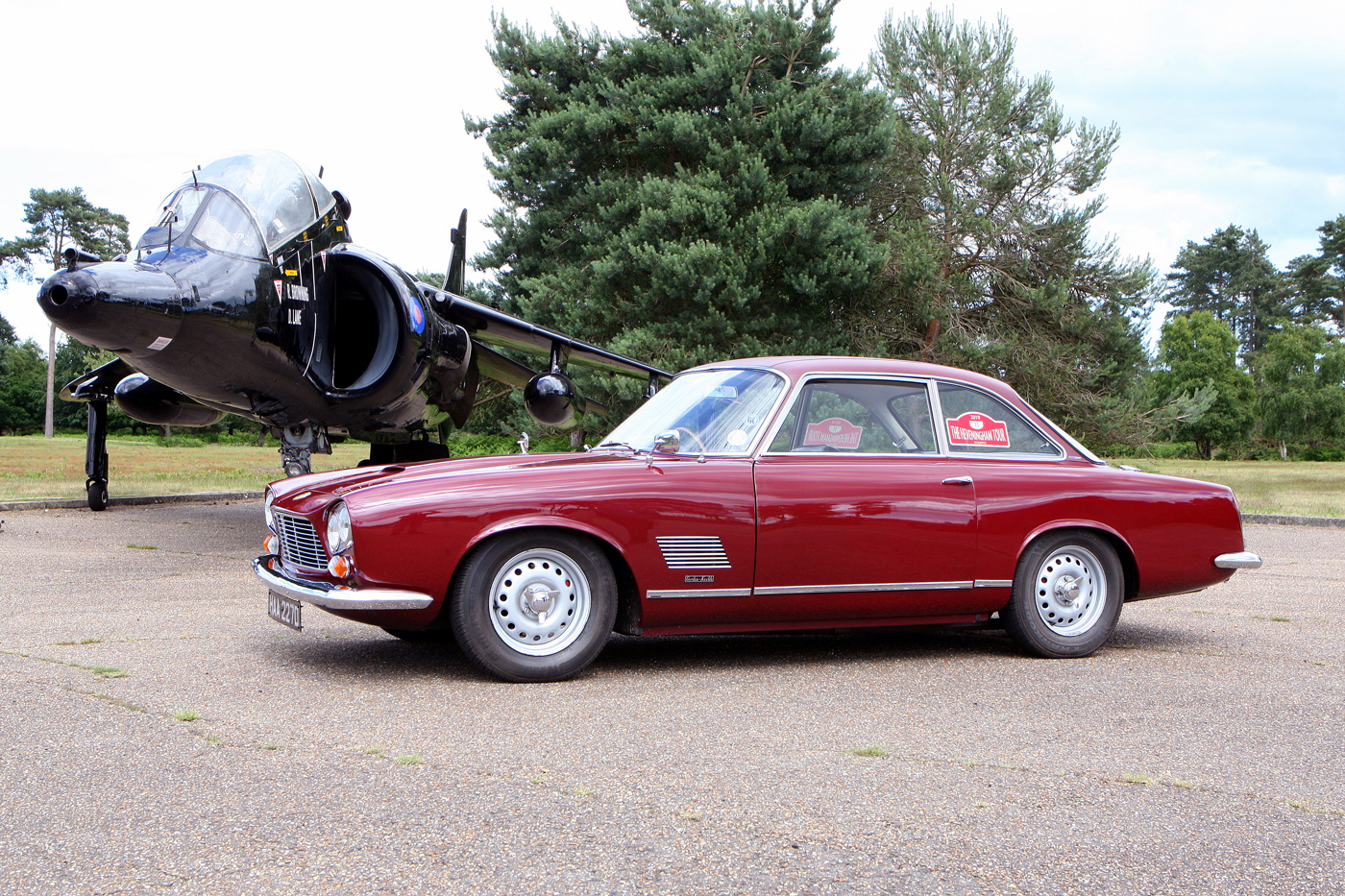
An entrant in the Heveningham Tour this Gordon-Keeble, belonging to Roy Dowding, is chassis number 94. Built in 1966, chassis 94 was to have been the company’s Le Mans entry but financial problems meant the liquidator ordered the car to be finished as a road car and then sold. Having enjoyed a ride in the car from RAF Bentwaters to Heveningham I can attest to how well it drives.
Picnic over, it was back to Heveningham Hall. My wife and I got a lift in Roy Dowding’s very impressive Gordan-Keeble. On Friday evening the owners enjoy a black tie do at the Hall, and the rest of us enjoy a barbecue with live music at Sibdon, another beautifully restored mansion on John and Lois Hunt’s wilderness estate. Saturday it’s back to the Hall to view the concours cars. The concours has only been running since 2016, but has already won the ‘Best breakthrough event’ at the Octane Magazine Historic Motoring Awards, and the quality of the cars on display is certainly second to none.
The event is not, however, just about cars; if you become bored with automobiles, you can also enjoy the craft tent, the birds of prey display, steam engines and a favorite of mine, the Suffolk Punch horses, a different form of horse power. Aircraft are also a major element in the weekend with owners competing for the Hanna Aviation Trophy named after the late great air display masters Ray and Mark Hanna. The final line has to be the heartfelt comment spoken by the great display pilot Vic Norman at the prize giving at the Hall on the Saturday night, “Ray Hanna was to aviation what Jim Clark and Fangio were to motor racing.”
Below, my selections this year. Also, all the information is derived from the placards and or programs, and though we try to fact check where feasible, the truth may elude us nevertheless.
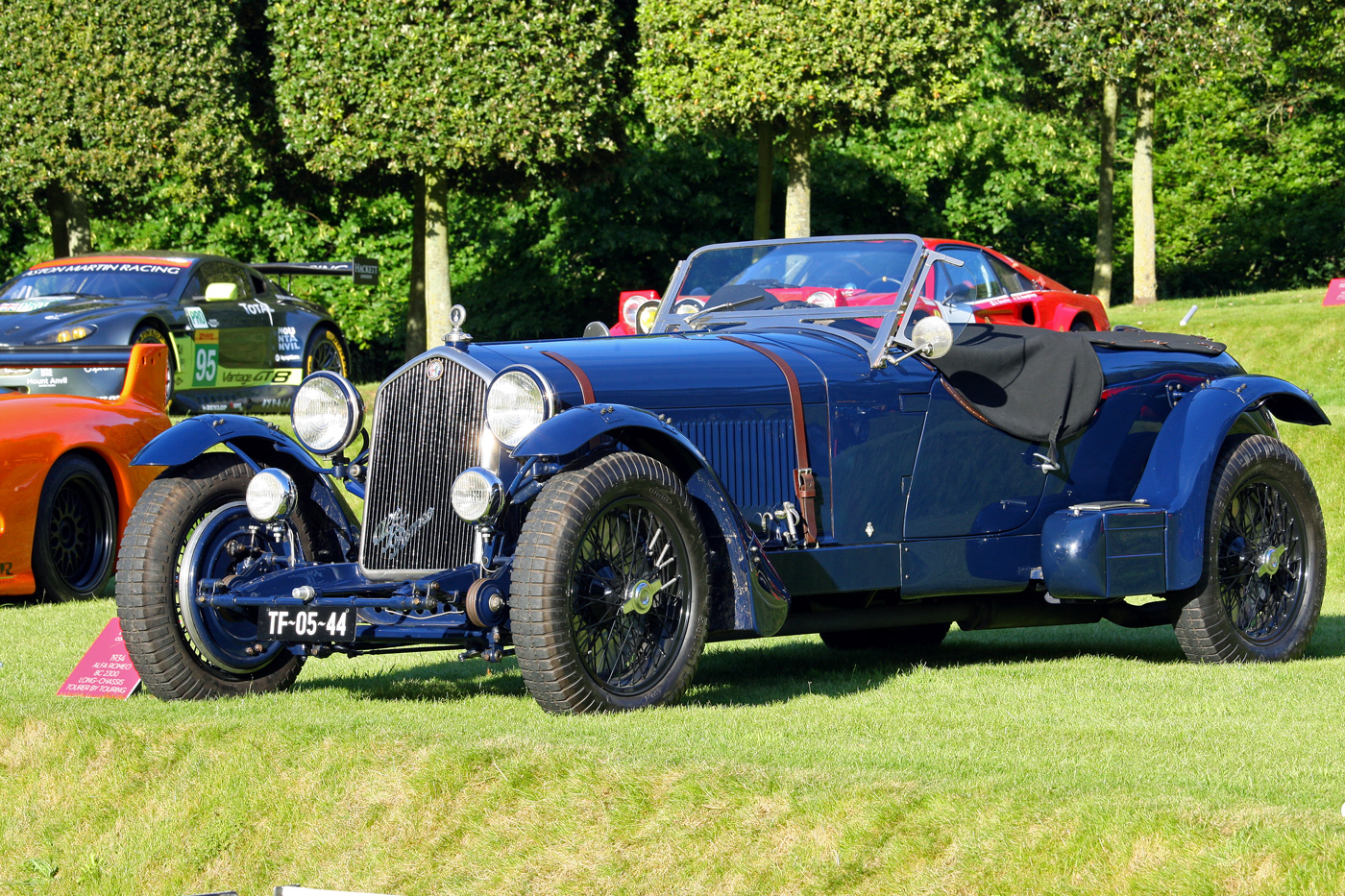
It is believed that this 1934 Alfa Romeo 2300, chassis 2311222, started life as a cabriolet. It is a well-travelled example having spent time in Italy, Belgium, Switzerland, the USA and the UK. The replica of the Carrozzeria Touring’s Le Mans body was faithfully constructed by British coachbuilder Rod Jolley.
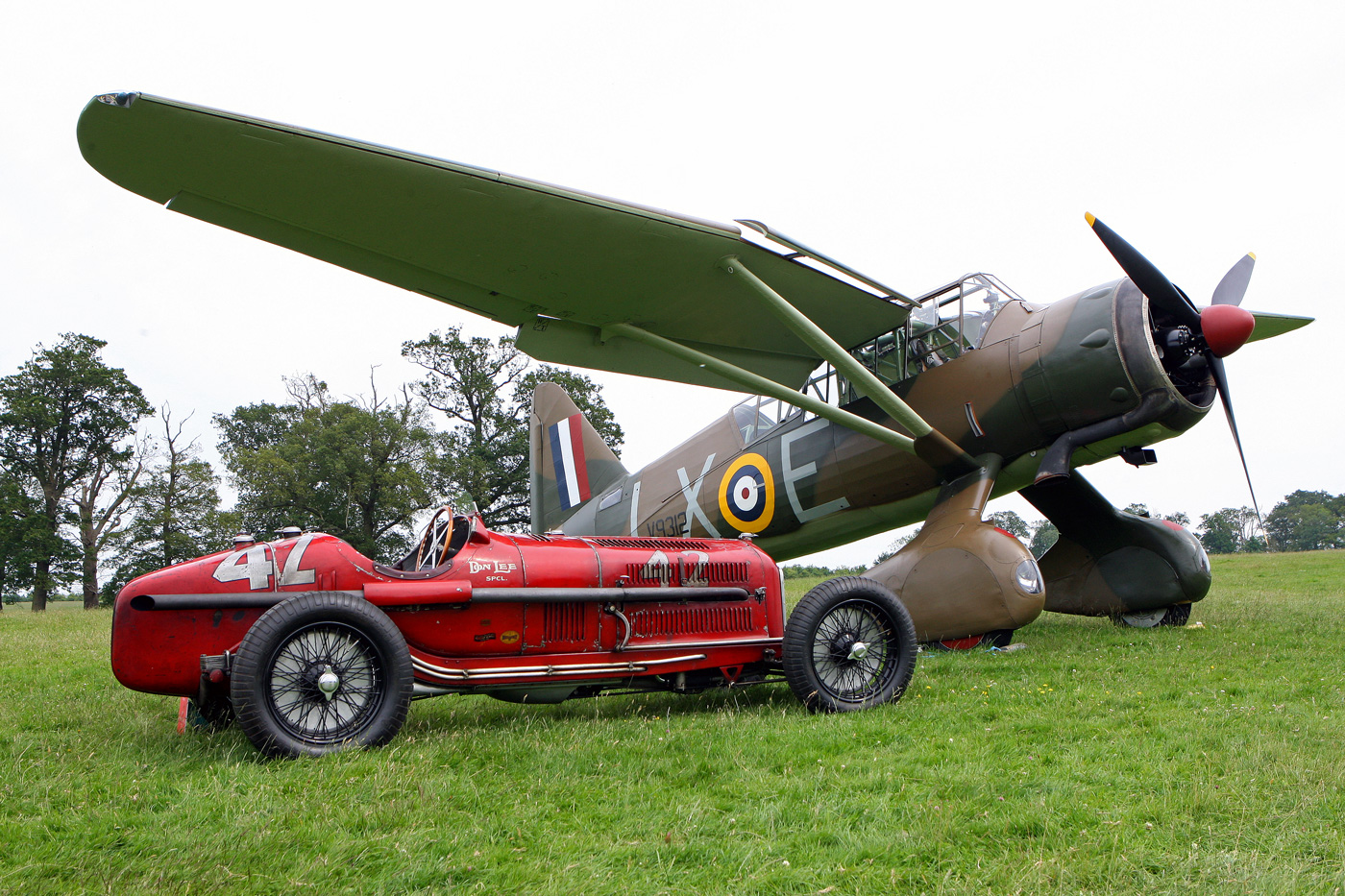
This 1934 Alfa Romeo P3 was purchased by wealth Spanish Privateer Count Jose Padierna de Villapadierna. By the late 1930s the P3 had made its way to the USA making several appearances at the Indy 500, racing as the Don Lee special, the markings of which she still carries to this day. Owner Jennie Taylor, the widow of Hugh Taylor, was delighted to win the prize for the best prewar car at the Heveningham event.Next to the Alfa P3 is the winner of the Hanna Aviation trophy. This Lysander was built by Westland in 1939 and served with 613, 224 and 4 Squadron of the RAF. On the 26th April 1942 she suffered damage to a wing, and was dispatched to Fairfield Aviation in Watford for repairs. It was whilst at Fairfield Aviation that the decision was made to convert her to Target Tug configuration for use in Canada, then shipped to Mossbank in Saskatchewan and used extensively in the service of the Commonwealth Air Training plan until 1944. A local farmer then purchased her in 1946 but did nothing to preserve her until she was rescued by vintage aircraft enthusiast Harry Whereatt. By 2003 she had made her way back to the UK and into the care of the Aircraft restoration company at Duxford who undertook a painstaking restoration and in August 2018 she took to the air once more.
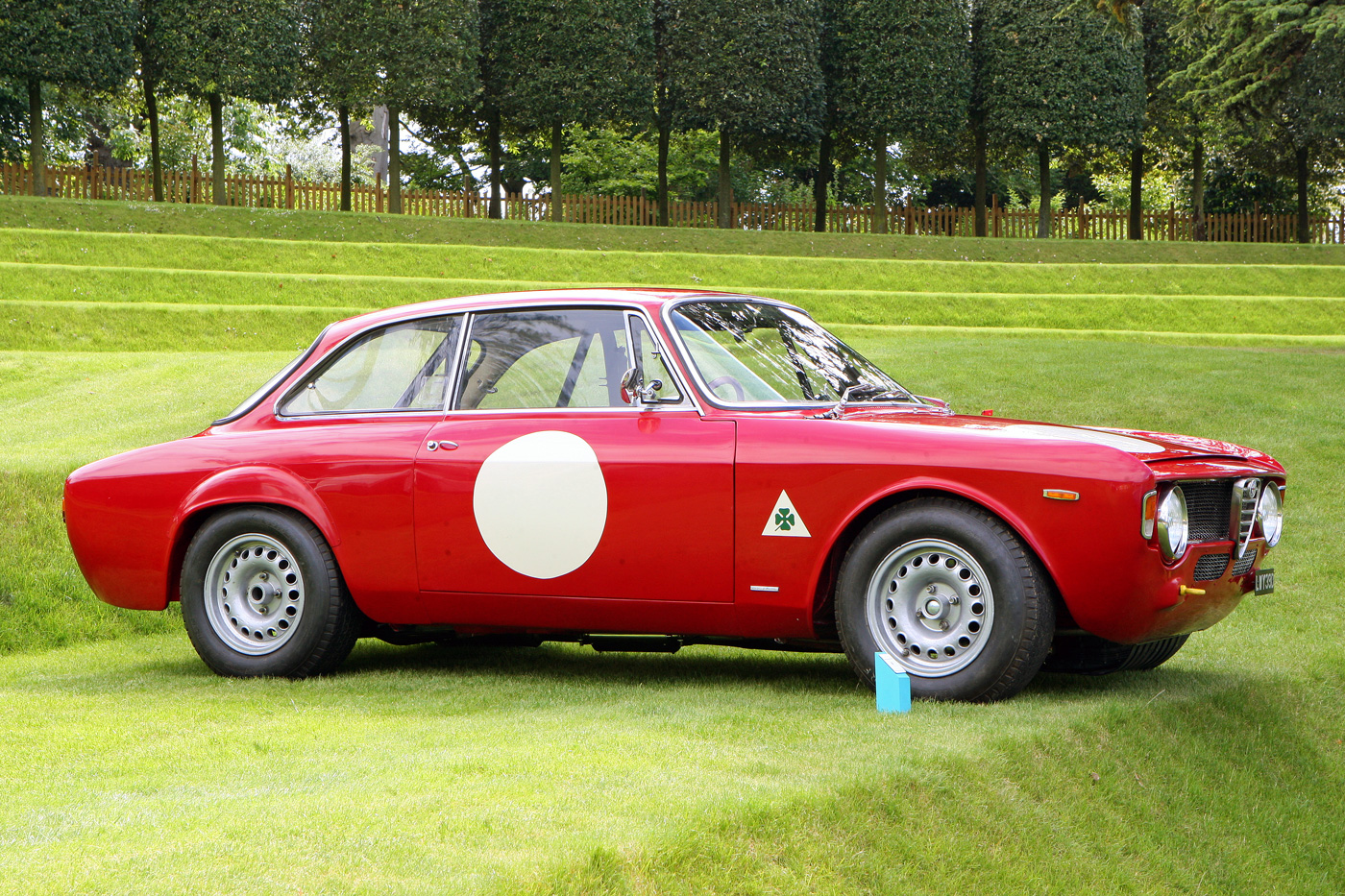
One of two Alfa Romeo GTAs entered in the concours. Chassis AR752638, from 1965, was supplied to Tommy Clapham, a British Alfa Romeo dealer and was raced successfully until the early 1970s. More recently the car has been campaigned across Europe in various historic race meetings.
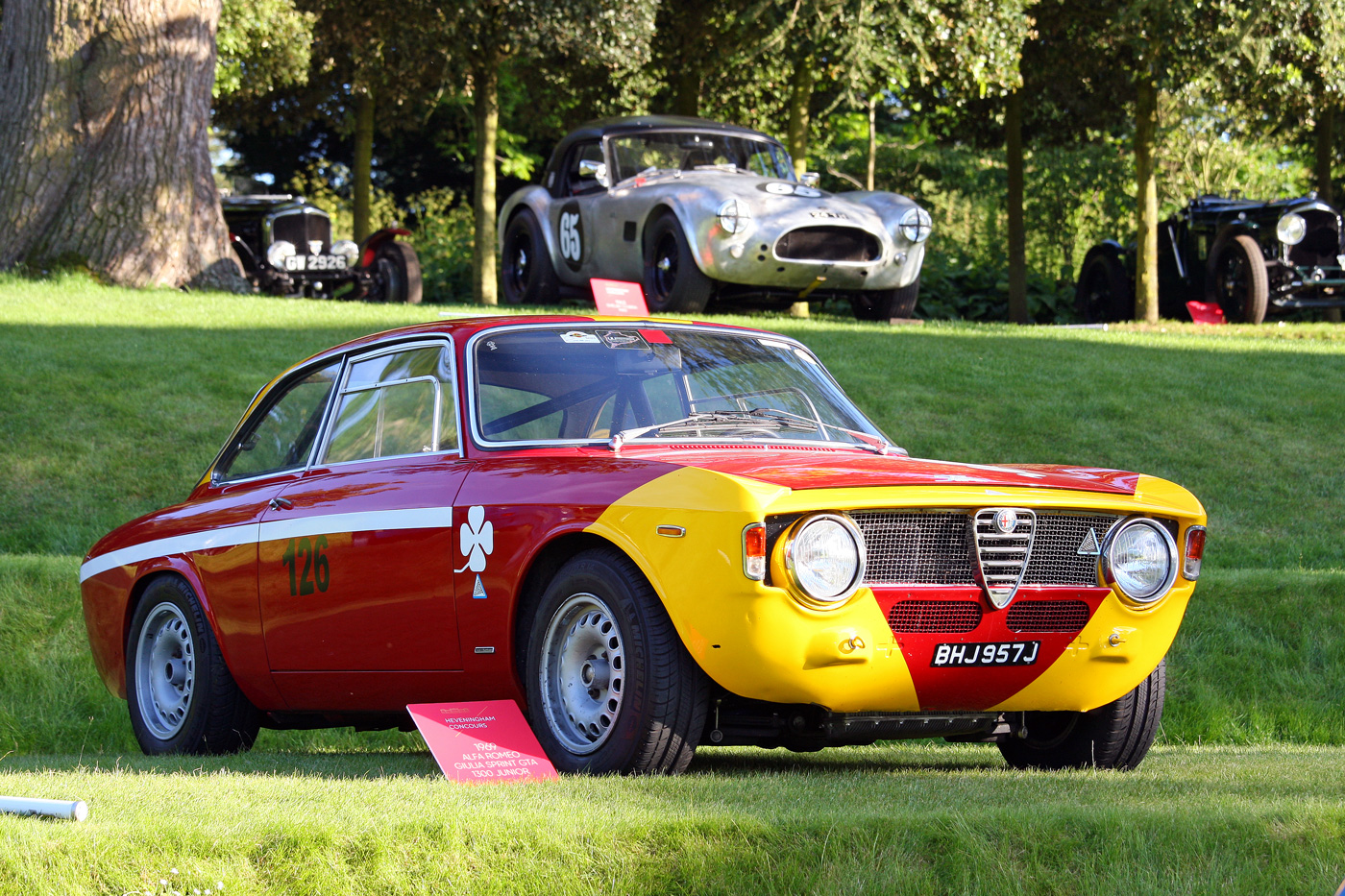
The second GTA at the concours was this 1969 ex-Autodelta GTA 1300 Junior Chassis 775358. Its first class victory was at the Belgrade Grand Prix and in May it won an overall victory at the Budapest Grand Prix.

Forest Lycett was a fanatical motorist who was determined that his 1931 8 Liter Bentley was to be the finest motor car on the British roads. To make this happen, he enlisted the help of Bentley tuning wiz LC McKenzie who managed to extract 340 bhp from the straight six engine, 120 bhp more than when it left the factory. Corsica constructed the rakish two-seater bodywork from Duralumin, obtained courtesy of Forest’s contacts within the RAF. On the 29th August 1939, the 8 Liter set several class B records at Brooklands including a flying kilometer at 141.13 mph.

Known by Woolf Barnato as ‘Old Mother Gun’ the 1927 Bentley Jackson Special evolved from chassis ST3001, the first Bentley 4.5 built. ST3001 made its competition debut in the hands of Barnato at the 1927 Le Mans 24 hour race but Barnato was forced into retirement as a result of the eight car crash at White House corner. For the 1928 event, chassis ST3001, in the hands of Barnato and Bernard Rubin, crossed the line first. Bentley finally sold Old Mother Gun to Richard Marker who fitted a Bentley 6.5 liter engine and then campaigned the car in the mid-1930s. Robin Jackson acquired the car in 1936 and rebuilt it as a 135-mph single-seater on a longer chassis.
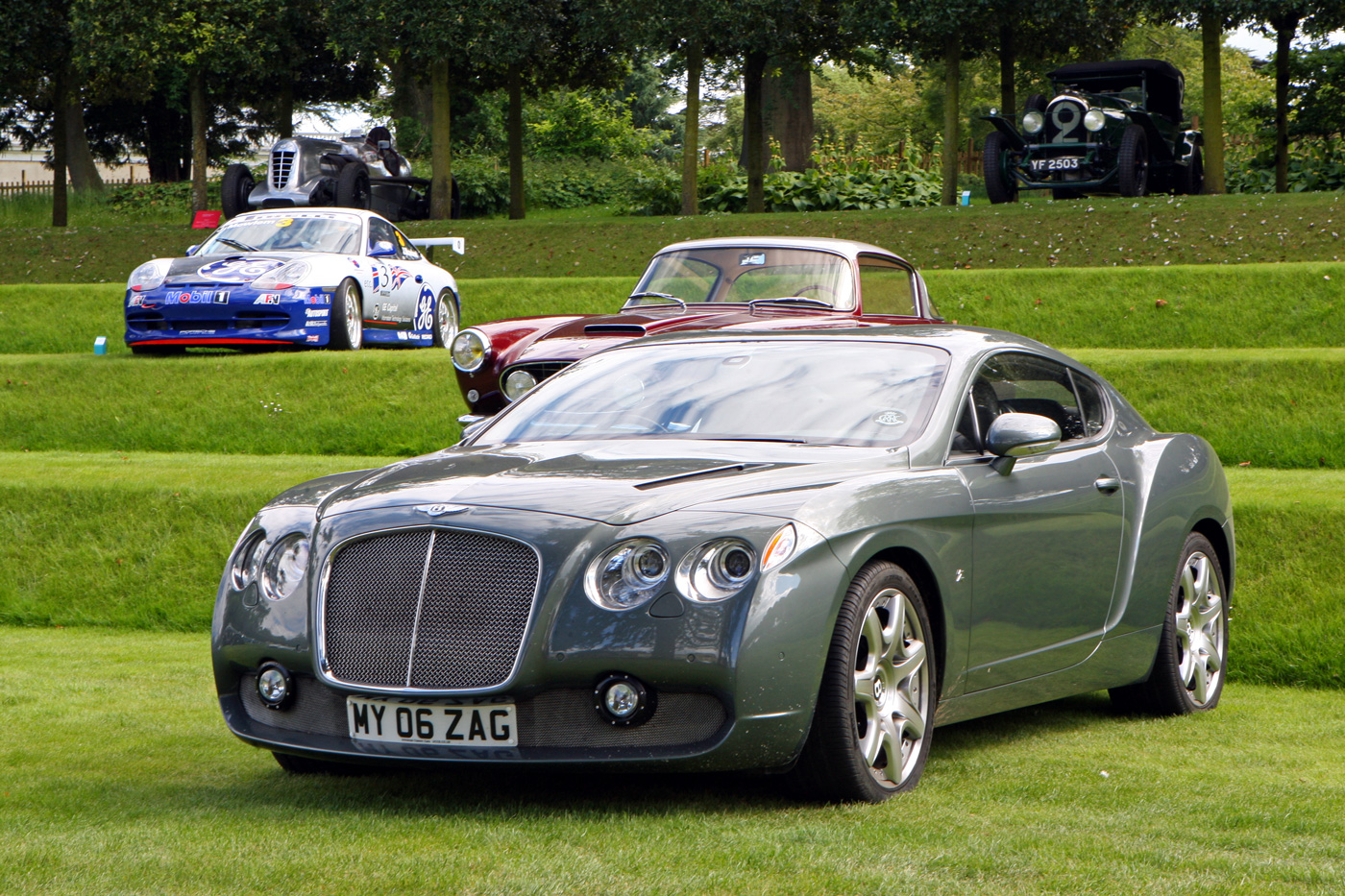
One of nine Zagato bodied Bentleys built, this example chassis 03871, like all Bentley GTZs started life in 2006 as a standard Continental GT. The original owner enjoyed the car for three years before passing the car, together with a cheque for 500,000 euros, to Zagato for the GTZ transformation. Amazingly the only exterior component retained in the transformation is the four headlights.
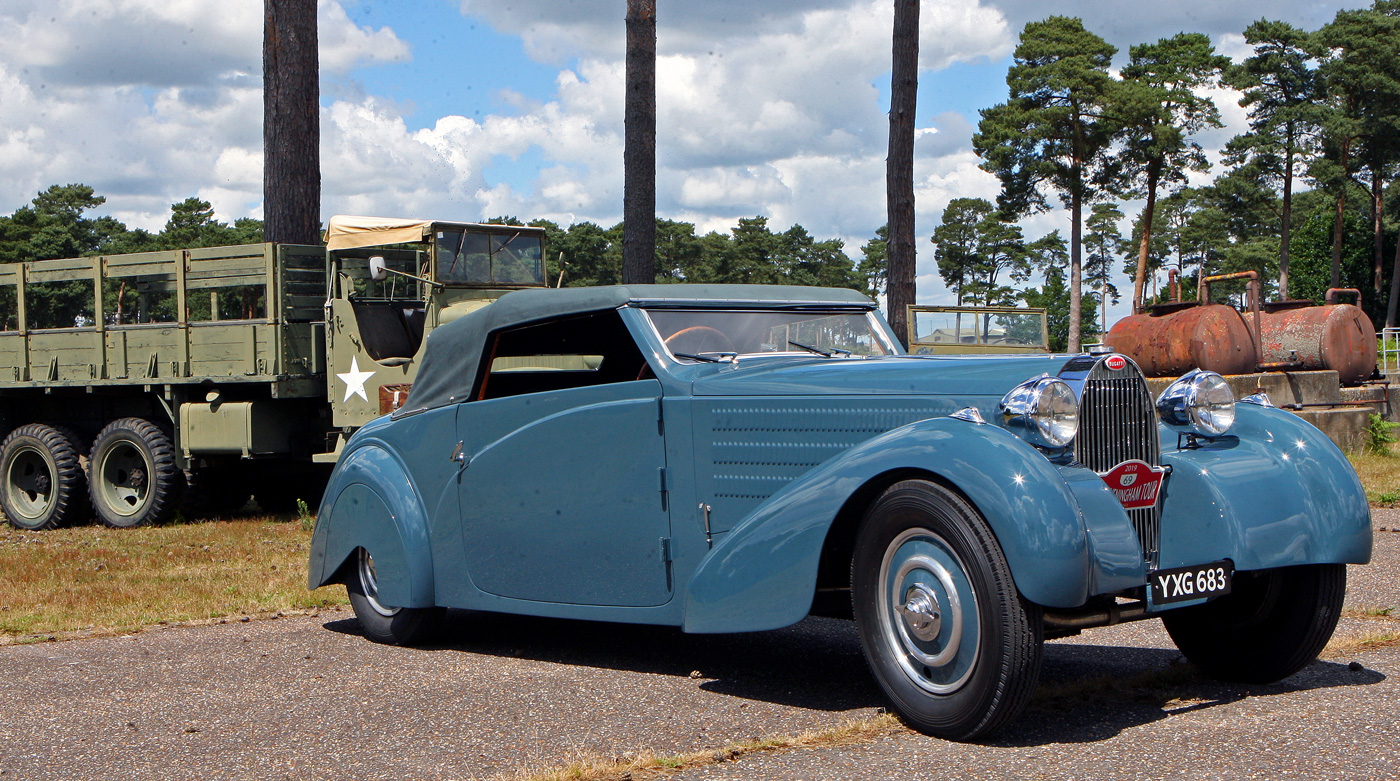
The concours was blessed with two Bugatti T57s. This example, chassis 57143, dates from 1934 and was originally supplied with the Galibier saloon body. In 1936 Parisian Bugatti dealer Dominique Lamberjack decided to have it rebodied in the style of a Stelvio. It is believed that the work was carried out by Gangloff and features a lower than usual windscreen and a neat hood concealment creating an elegant line when the roof is retracted.
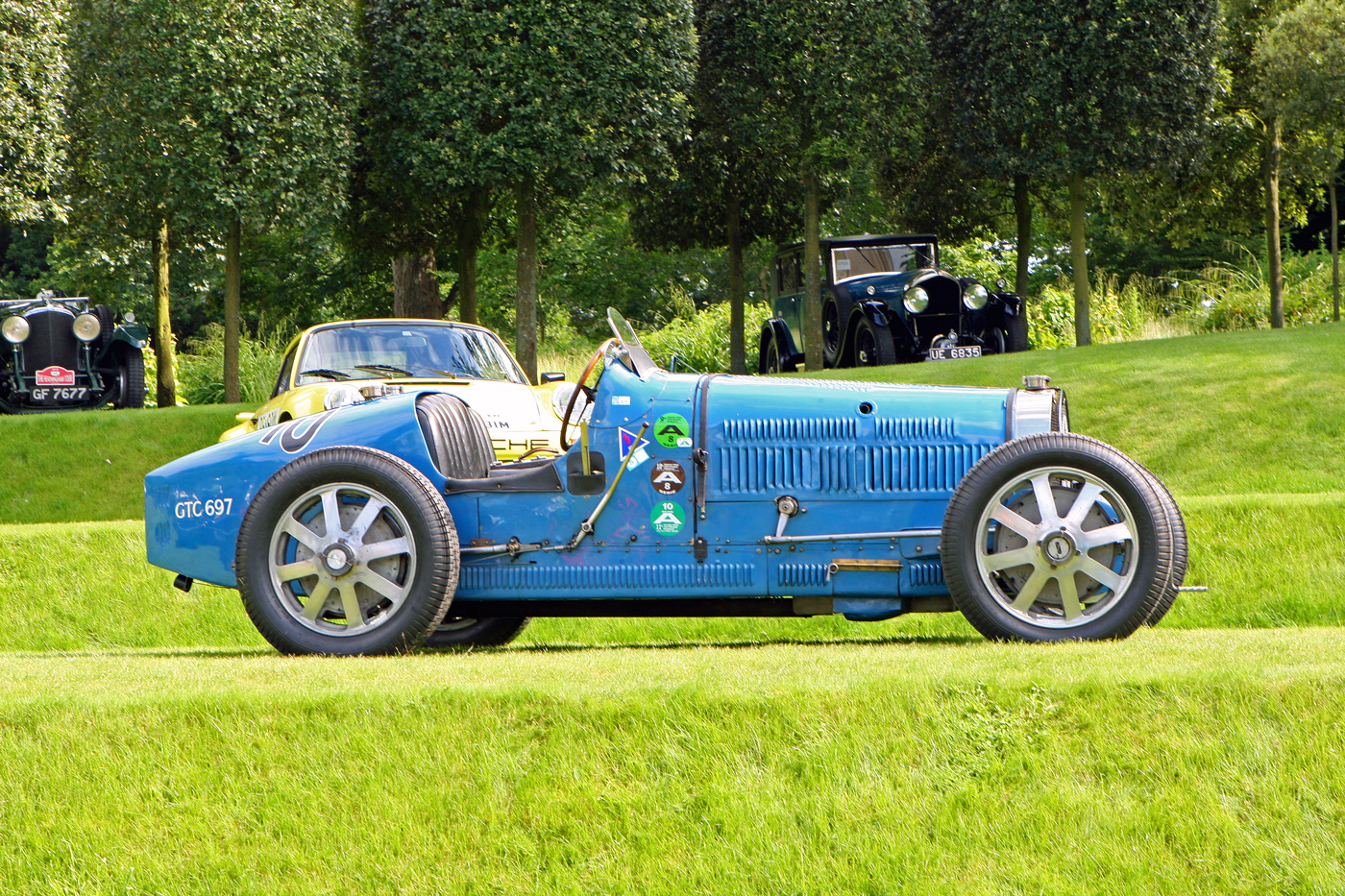
1929 Bugatti T35 chassis 4965 made its way to the UK where following the end of the war it was campaigned successfully up until the 1960s in the hands of Jim Bryant, Jim Berry, and Neil Corner, before passing into the care of collector Yoshiyuki Hayashi. The current owner has recently returned it to the track appearing at the Goodwood Revival and the Monte Carlo History Grand Prix.
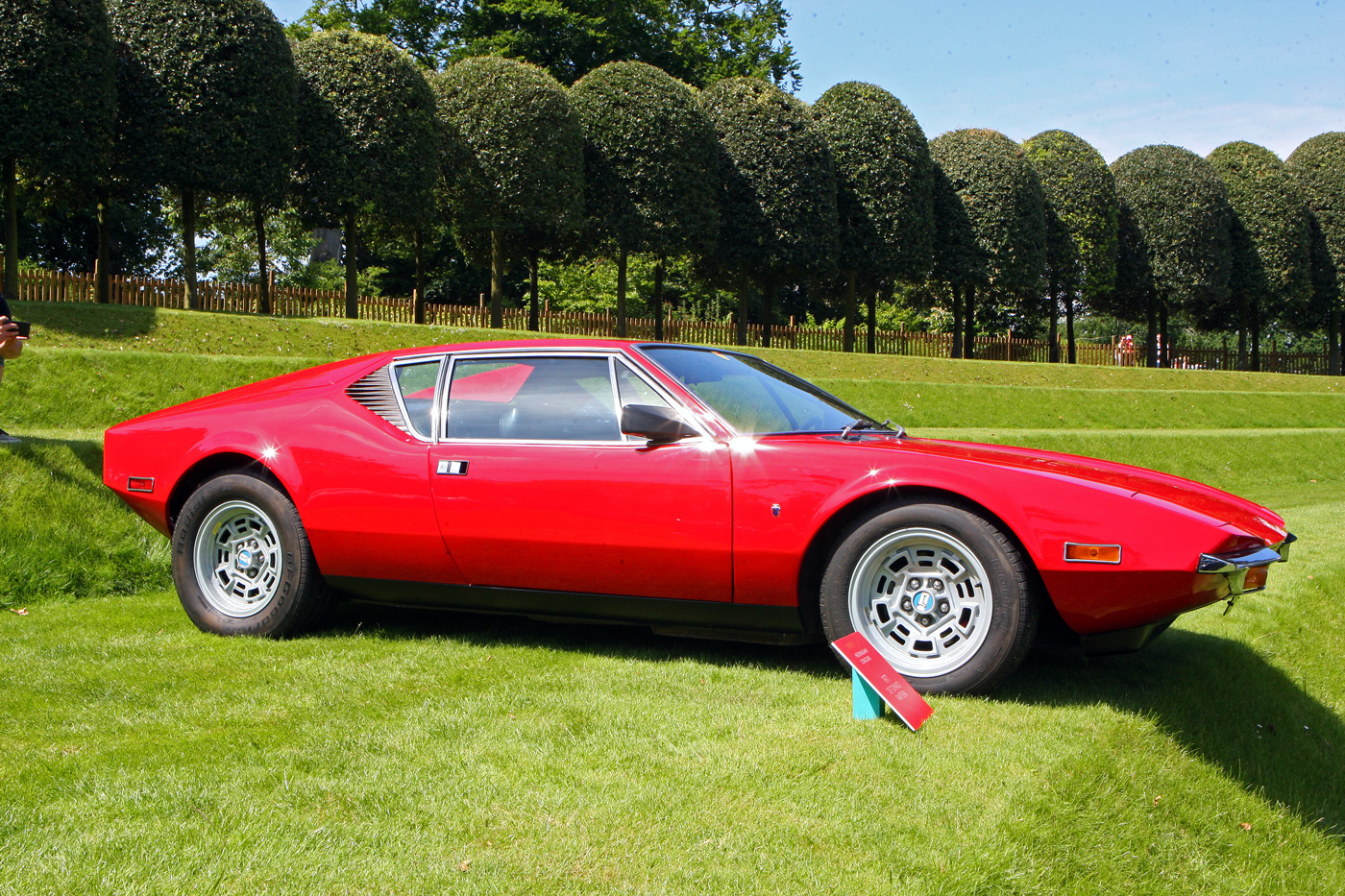
1971 De Tomaso Pantera, chassis 02290. A superb example and so refreshing to see a Pantera without chrome wheels, fat wheel arches and a tall boot spoiler.
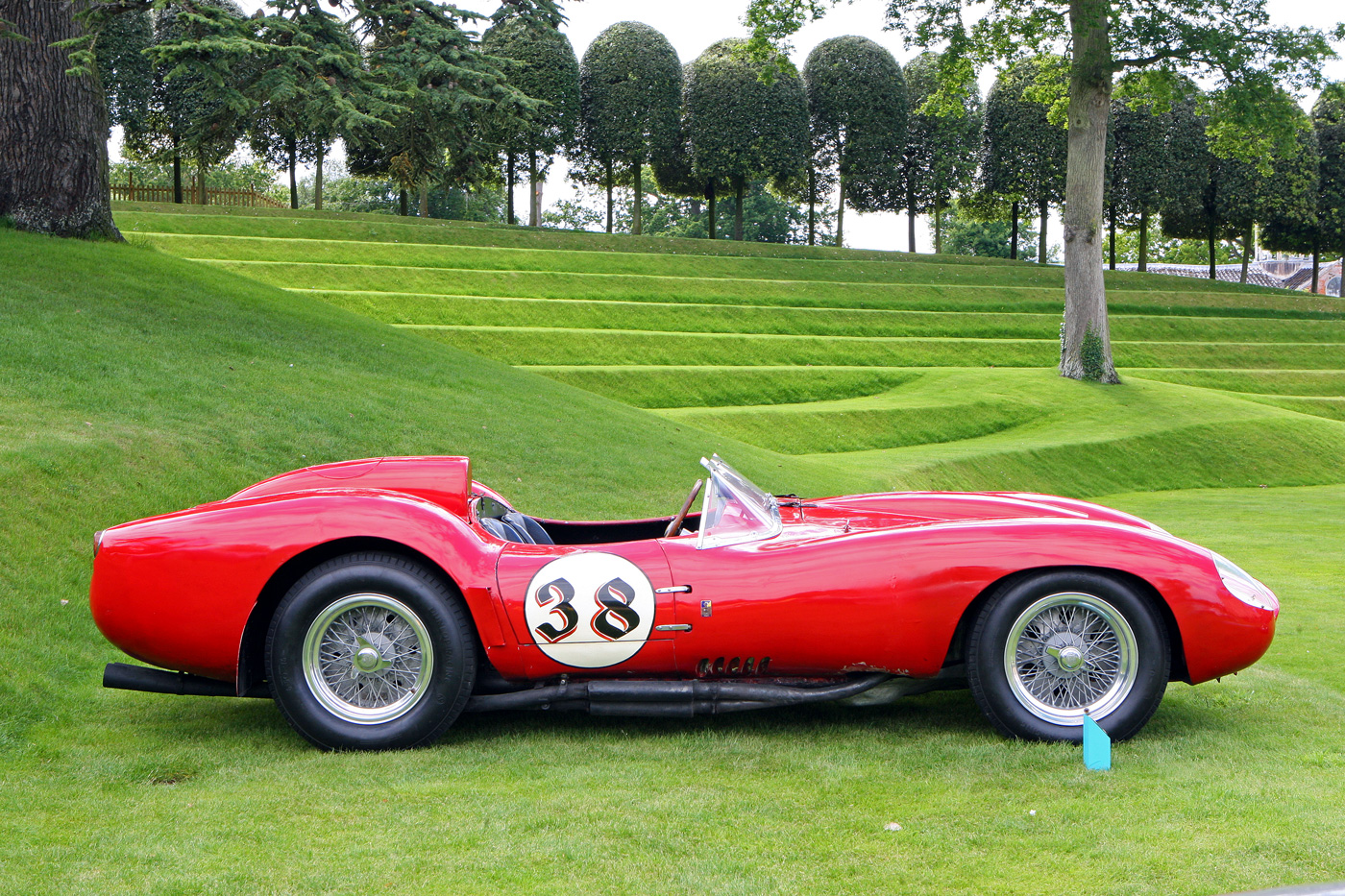
If you are wondering why the race numbers look odd, it is because this 1957 Ferrari 250TR, chassis 0704, is still in the livery of when it raced in October 1963, whilst in the care of Arthur True. When Arthur died a few years later he left the Testa Rossa to the Henry Ford Museum who proved to be good custodians before parting with the car in 1997. Luckily the car has remained unrestored.
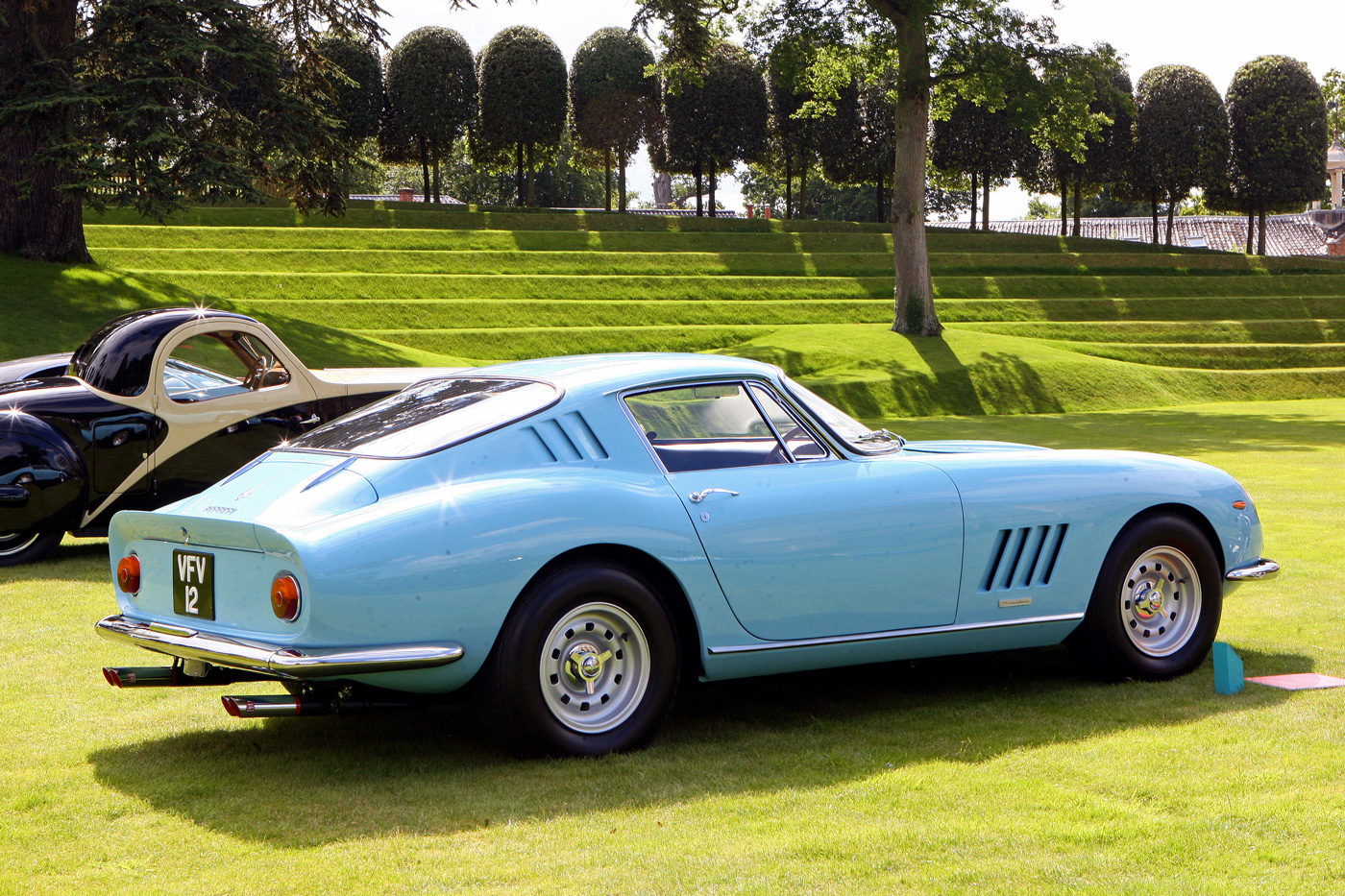
Colonel Ronnie Hoare of Maranello Concessionaires ordered this 1967 Ferrari 275 GTB/4 in his favorite Cambridge Blue color, known to Scaglietti as Azzurro La Plata. Following a full restoration by DK Engineering, the GTB was the winner of the postwar class at this year’s Heveningham concours.
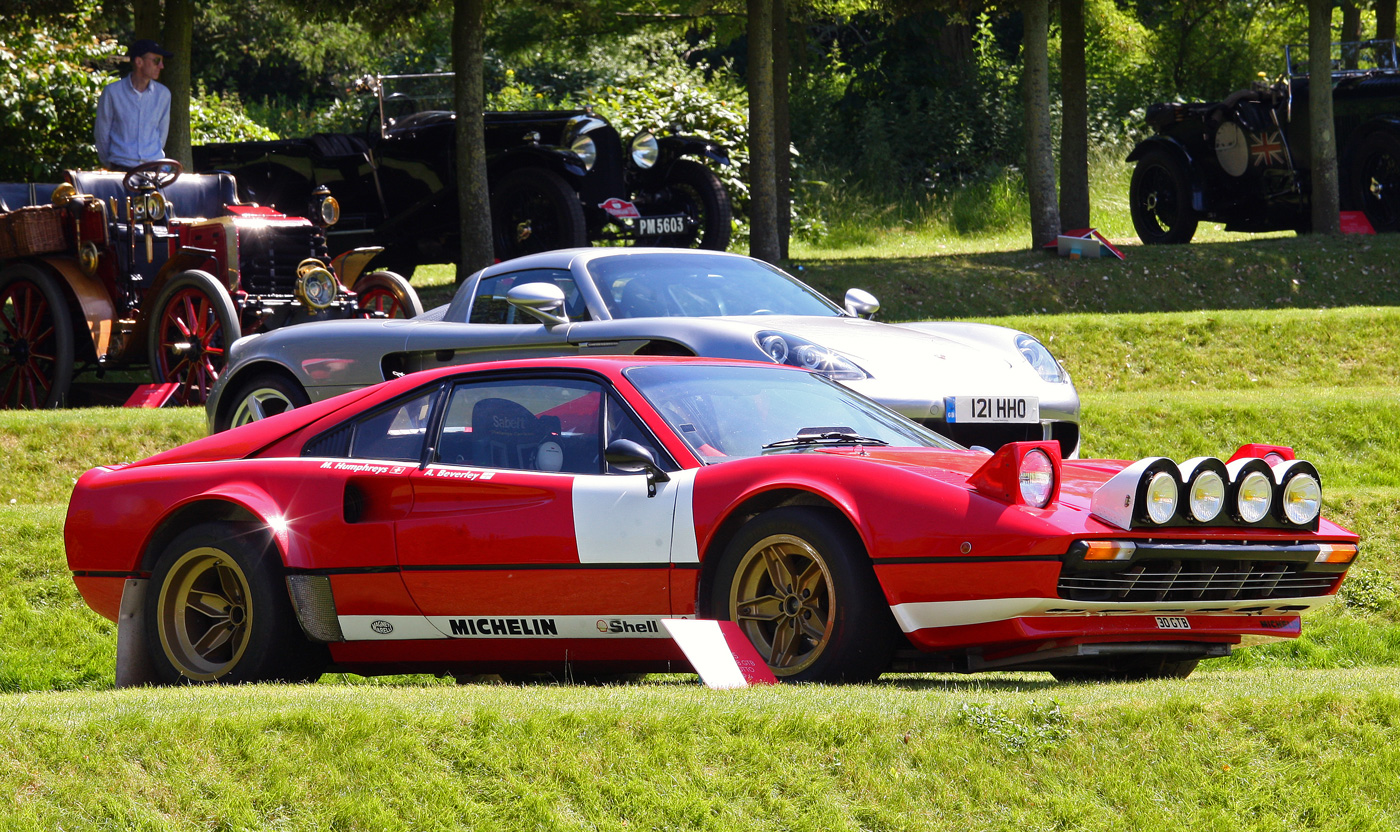
Listed in the event brochure as a 1977/85 Ferrari 308 GTB Michelotto Group 4, Chassis 21883 is one of 11 such examples constructed. It is fitted with Kugelfischer mechanical fuel injection and weighs 200 kg less than a standard 308 GTB.
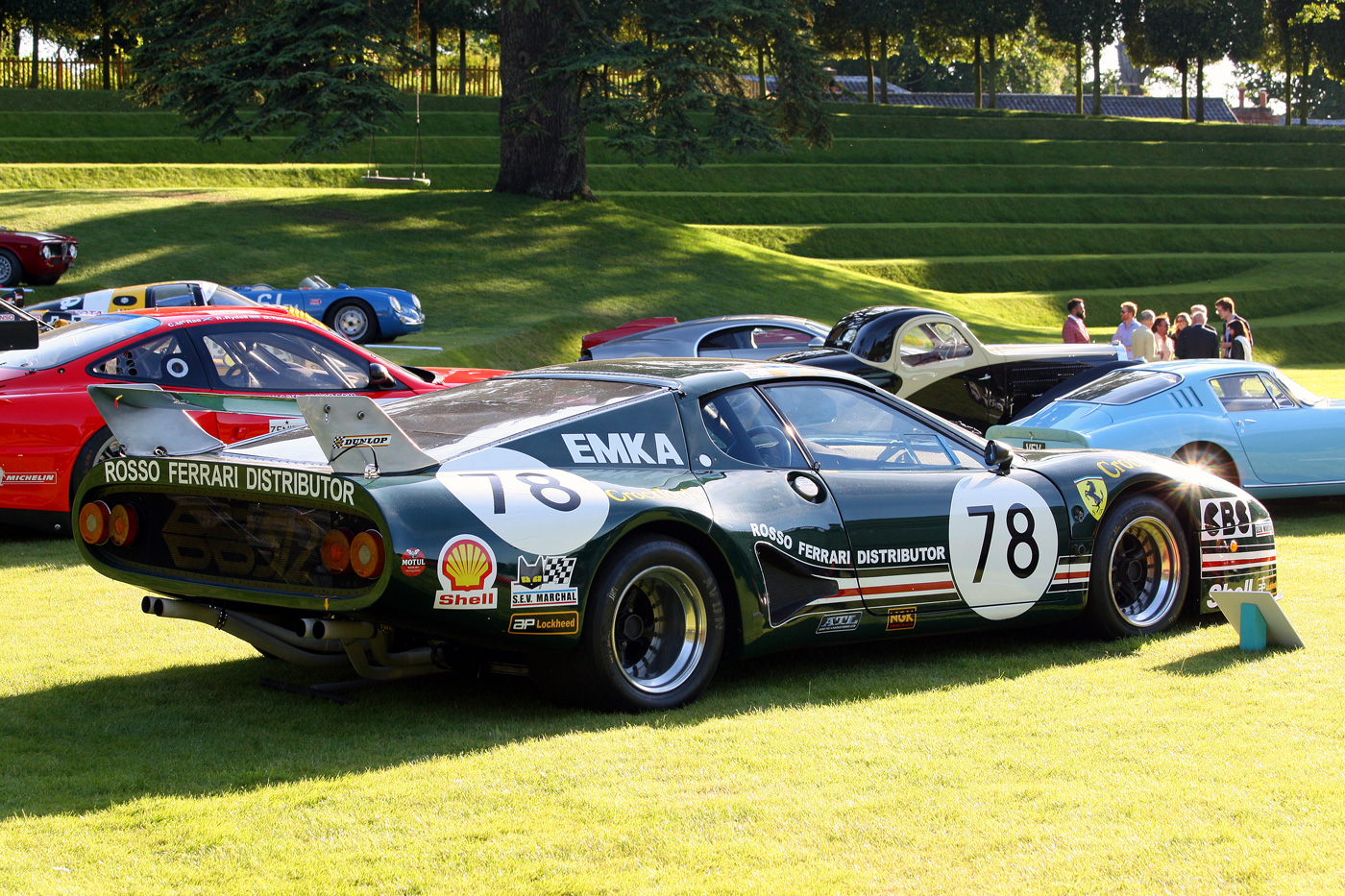
This 1979 Ferrari 512 BBLM chassis 27577 was delivered new to Jacques Swaters Ecurie Francorchamps and then to Jean Blaton who entered the car in that year’s Le Mans 24 hour race under his alias Beurlys, coming away with a 12th place finish
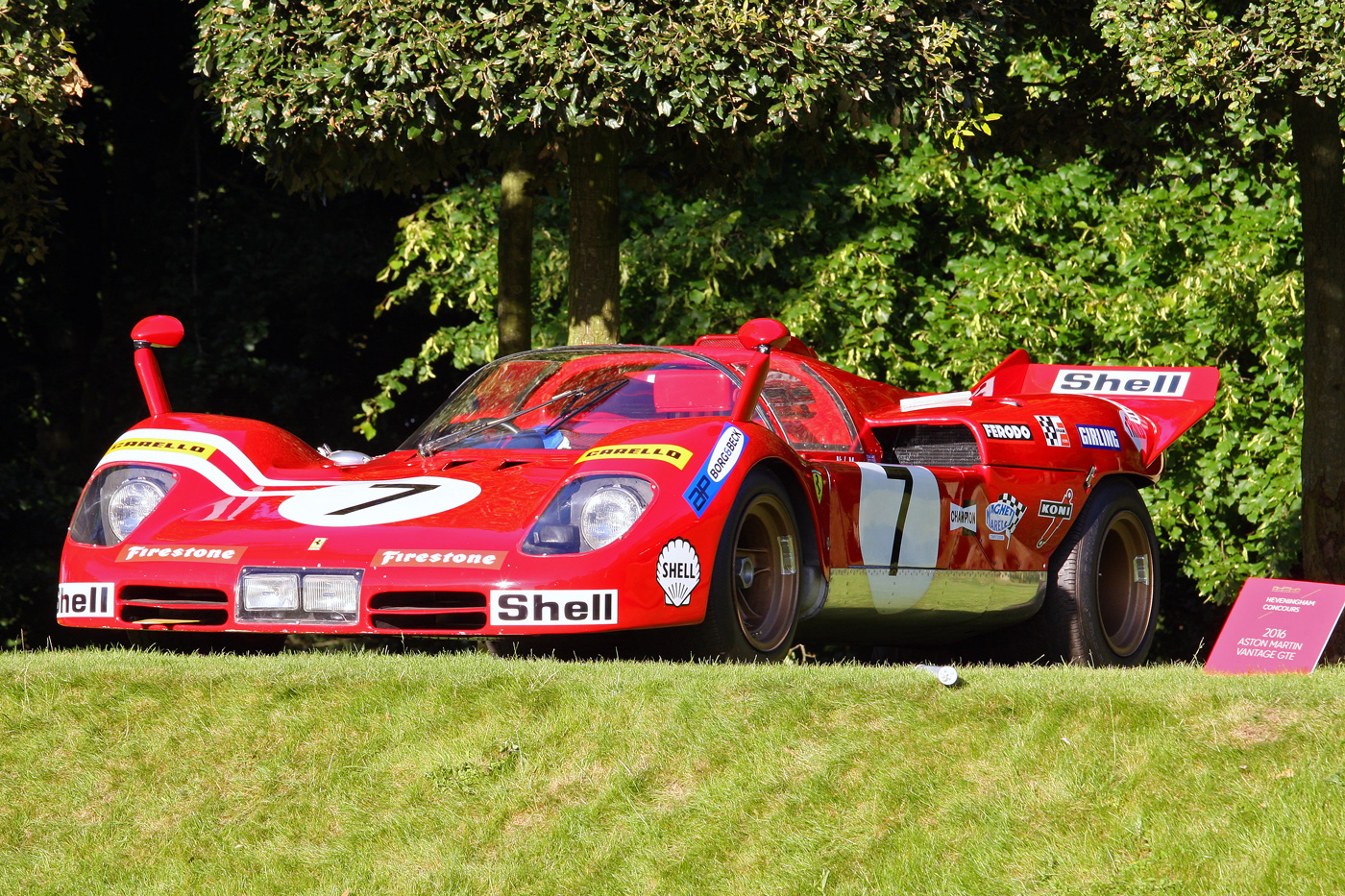
Nick Mason’s well-known 1970 Ferrari 512S chassis 1026 has two claims to fame, winning the 12 hours of Sebring in the hands of Mario Andretti, Nino Vaccarella and Ignazio Giunti, the factory’s only World Sports Car victory of that season, and being wrecked during the making of the film “Le Mans” when the onboard camera gear caught fire burning Derek Bell in the process.
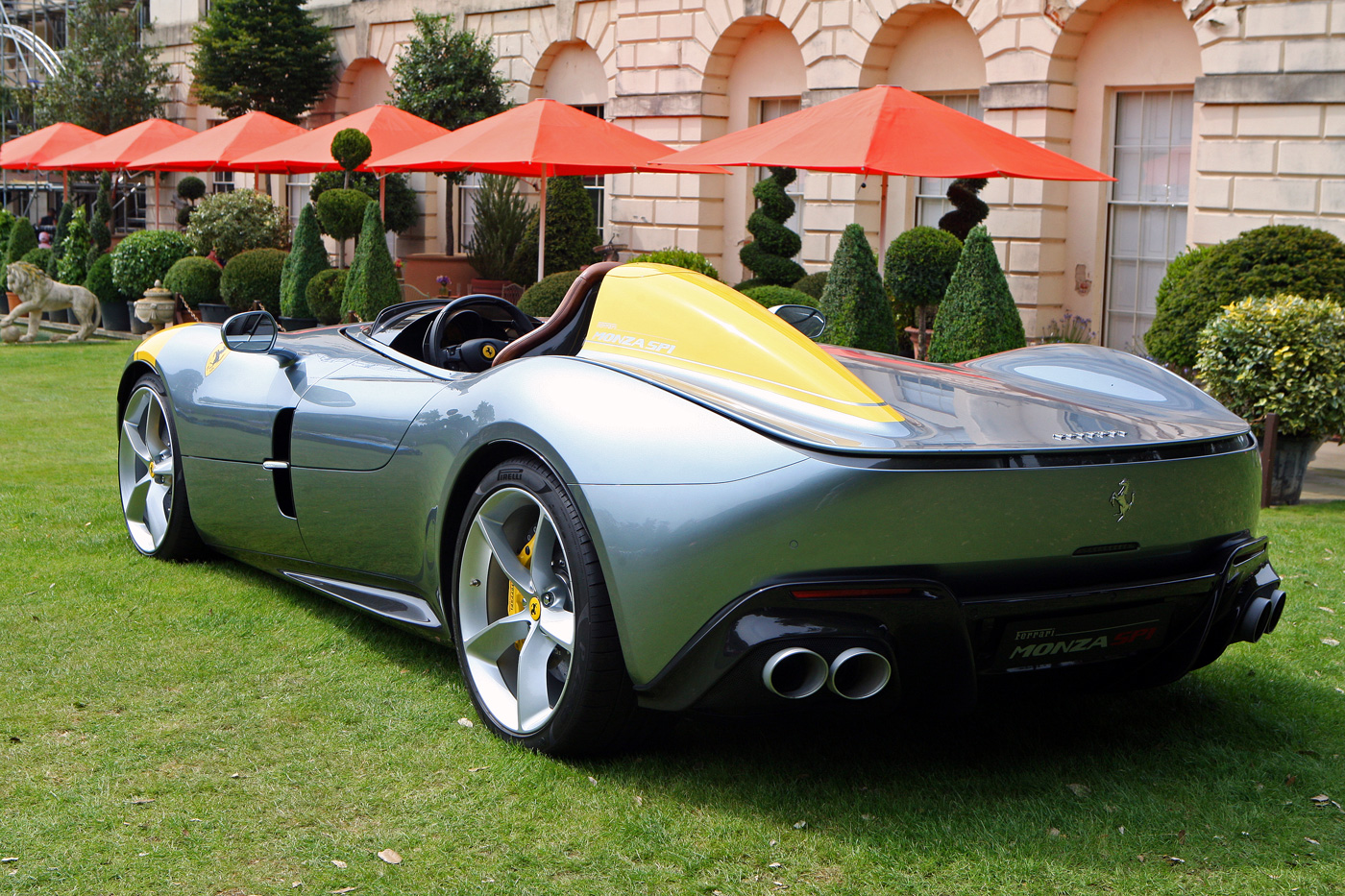
This one was very much the star attraction for the bloggers and vloggers and those who view life through the screens of their mobile phones. Under the skin of this 2019 Ferrari SP1 lurks the mechanics of an 812 Superfast. The SP1 (so the press release goes) is the first in a new series of limited-edition Ferraris called Icona. The SP1 is a single seater, the SP2 a two-seater.
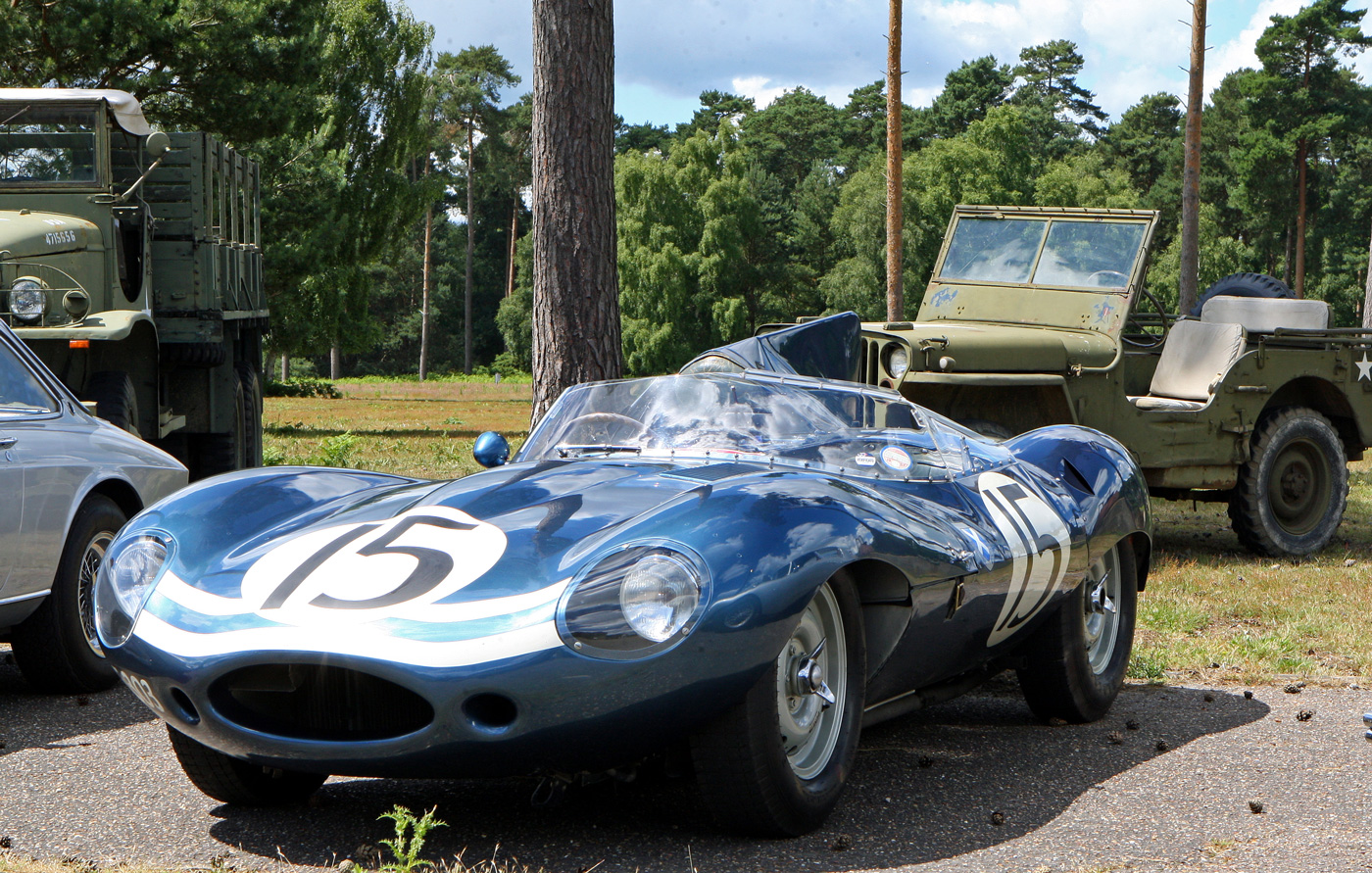
1956 Ecurie Ecosse Jaguar D Type XKD603 placed second at the 1957 Le Mans 24 hour race. It is the most original surviving ex-works long nose example.
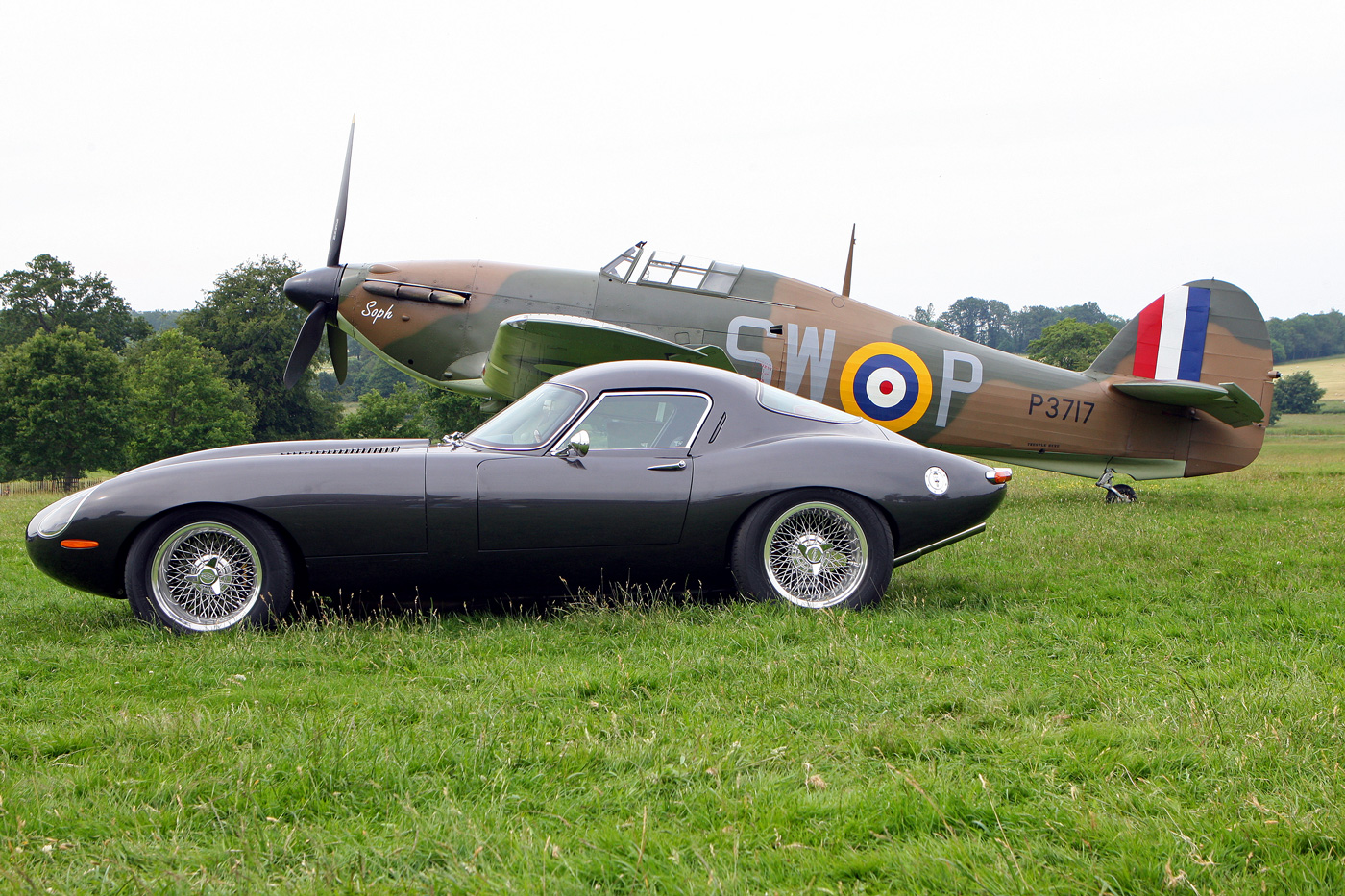
Hawker Hurricane MK1 P3717, built in 1940, was initially stationed at Kirton in Lindsey but moved with 253 Squadron to RAF Kenley in the middle of the Battle of Britain. On Friday the 30th August 1940 P3717 was one of 14 aircraft scrambled to intercept enemy aircraft. She was flown on that day by WMC Samolinski who downed a Messerschmitt BF110 before being hit by another 110, but he managed to nurse her back to base. She was repaired at Henlow but shortly after return to service with 257 squadron she was bounced by BF109s and was damaged again. This time the repairs were carried out by De Havilands. Converted to MK11A spec P3717 then served with the Soviet Air force before crashing again, this time on the Kola Peninsula, where the twisted remains stayed until being recovered in the 1990s, P3717 was finally returned to flight in 2017.

This 1954 Maserati 300S chassis 3054 was the fourth example built, but the first works car. (Briggs Cunningham purchased the first three.) It is also the only 300S that was driven to victory by both Fangio and Moss. Fangio won the 1955 Venezuelan Grand Pix, and Moss, sharing with Menditeguy, won the Buenos Aires 1000 km.
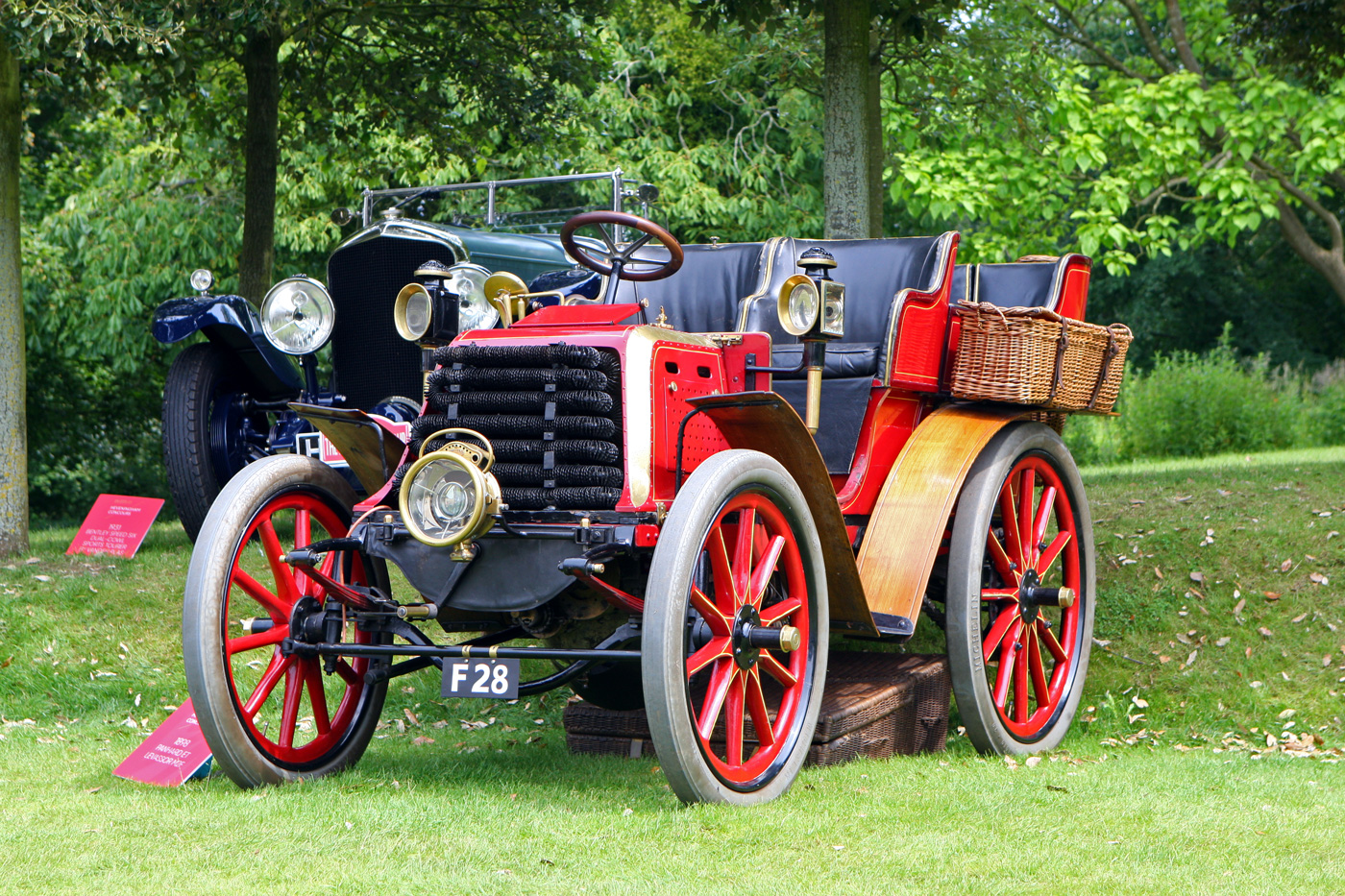
This very original 1898 Panhard et Levassor M2F was supplied originally to Parisian Panhard dealer Automobiles Charron, Girardot & Voight, but by 1904 the Panhard had made its way to the UK. It is a regular entrant, and finisher in the London to Brighton Veteran car run.
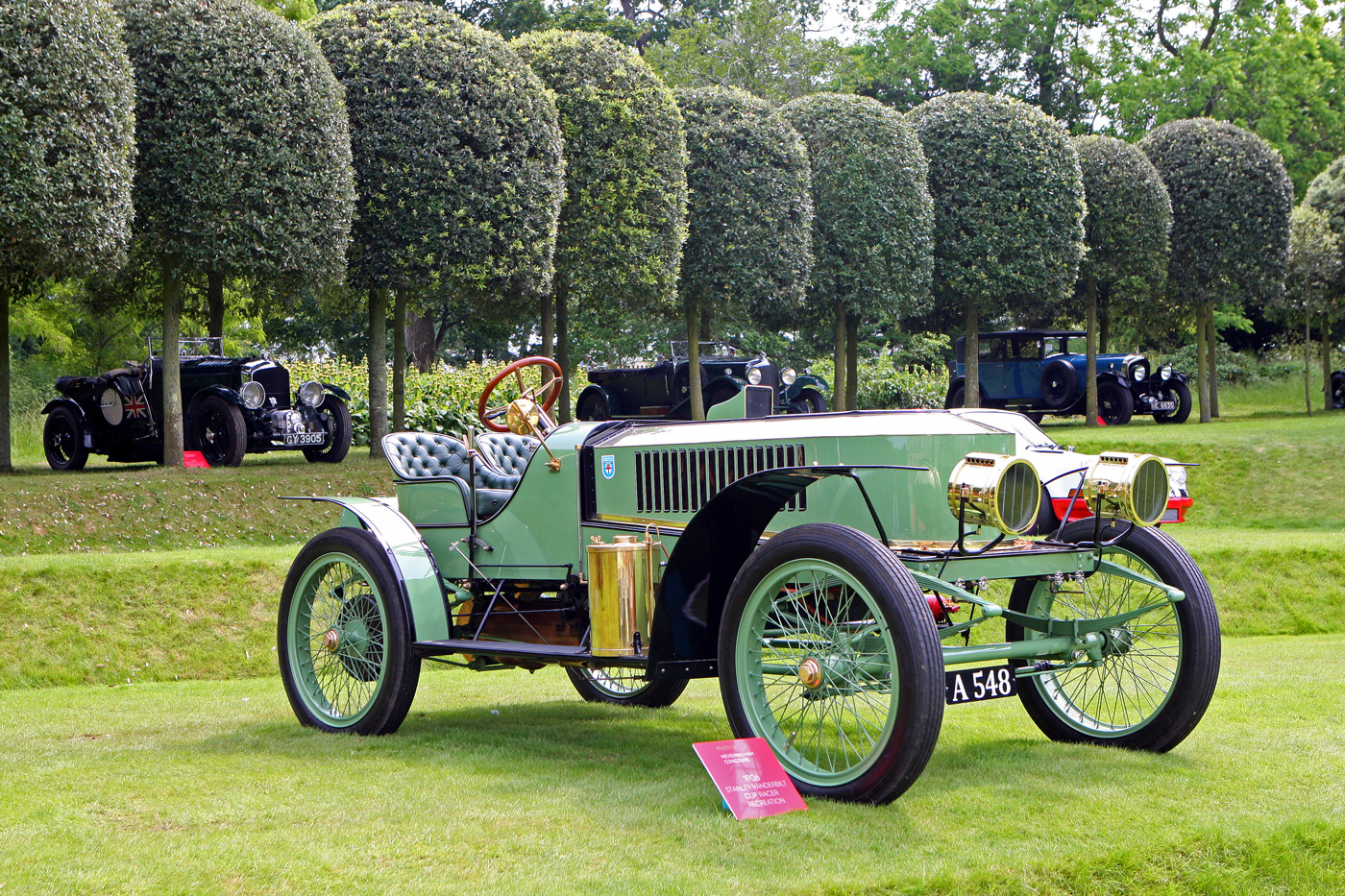
Two amateur racers from Philadelphia turned to the Stanley Motor carriage company to produce two cars for entry in the 1906 Vanderbilt Cup to be held on public roads on Long Island. For reasons unknown both Gentleman failed to appear at the start of the race but the sporty Stanley’s built for the race were well received. Neither original car survived, but this exacting replica was beautifully built by steam car specialist JR Goold, using a mixture of original and new components
Gallery
More cars and planes and shots we just could not edit out. We particularly like the aircraft histories provided by owners and entrants.
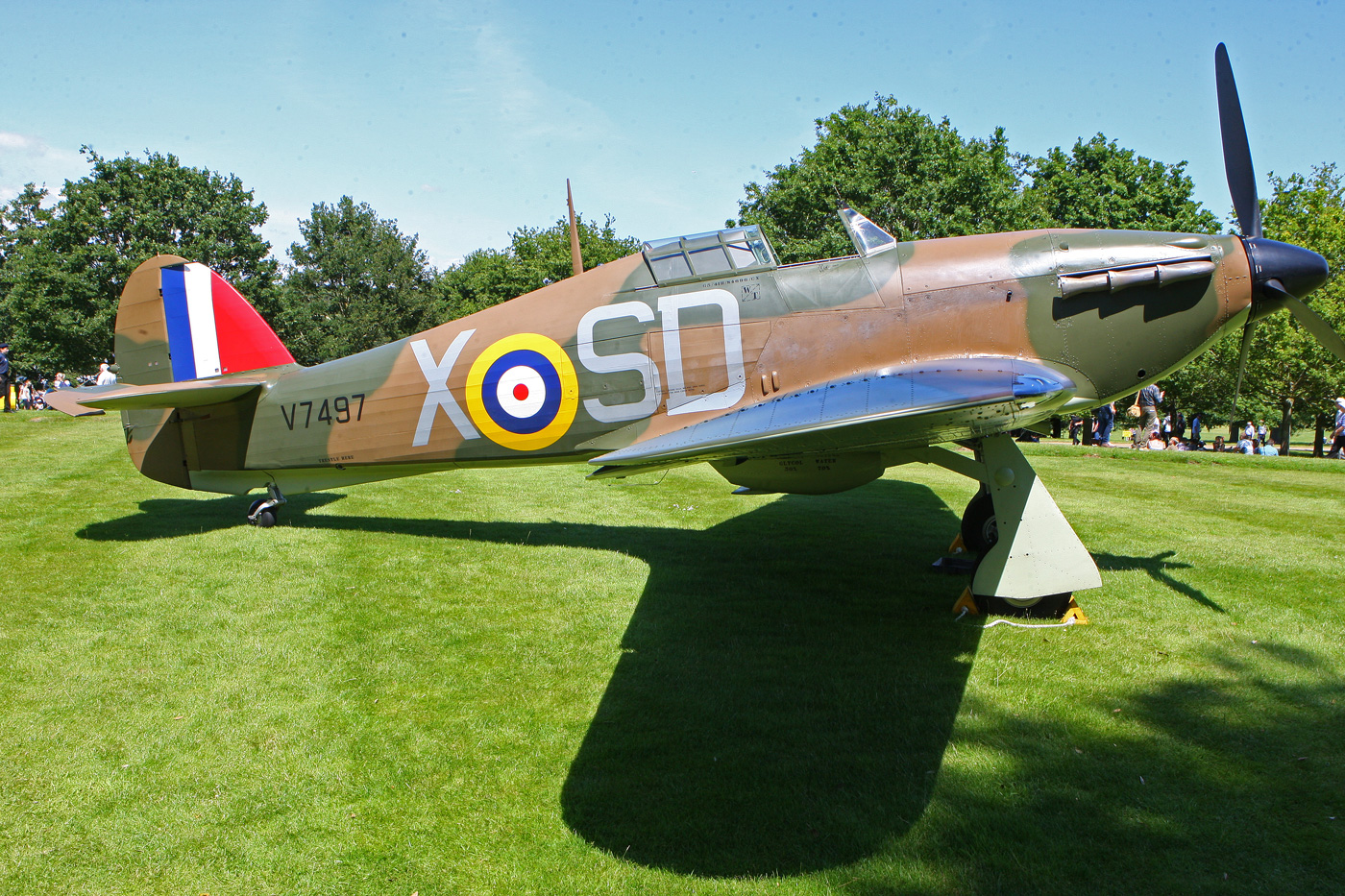
Hawker Hurricane MK1 V7497 was built by Hawker Aircraft Ltd at their then new facility at Langley in Berkshire and allocated to 501 Squadron (County of Gloucester) in September 1940. Operating at the height of the Battle of Britain from RAF Kenley her operational carrier was very short. On her seventh sortie on the 28th September 1940, whilst being flown by P/O Everett Bryan Rogers, 501 Squadron was intercepted over Sutton Valence in Kent by 12 ME109s from Jagdgeschwader 26 resulted in Rogers being shot down by Gustav “Micky” Sprick. Recently restored to flying condition by Hawker Restorations, V7497 took to the air once again on the 30th August 2018.
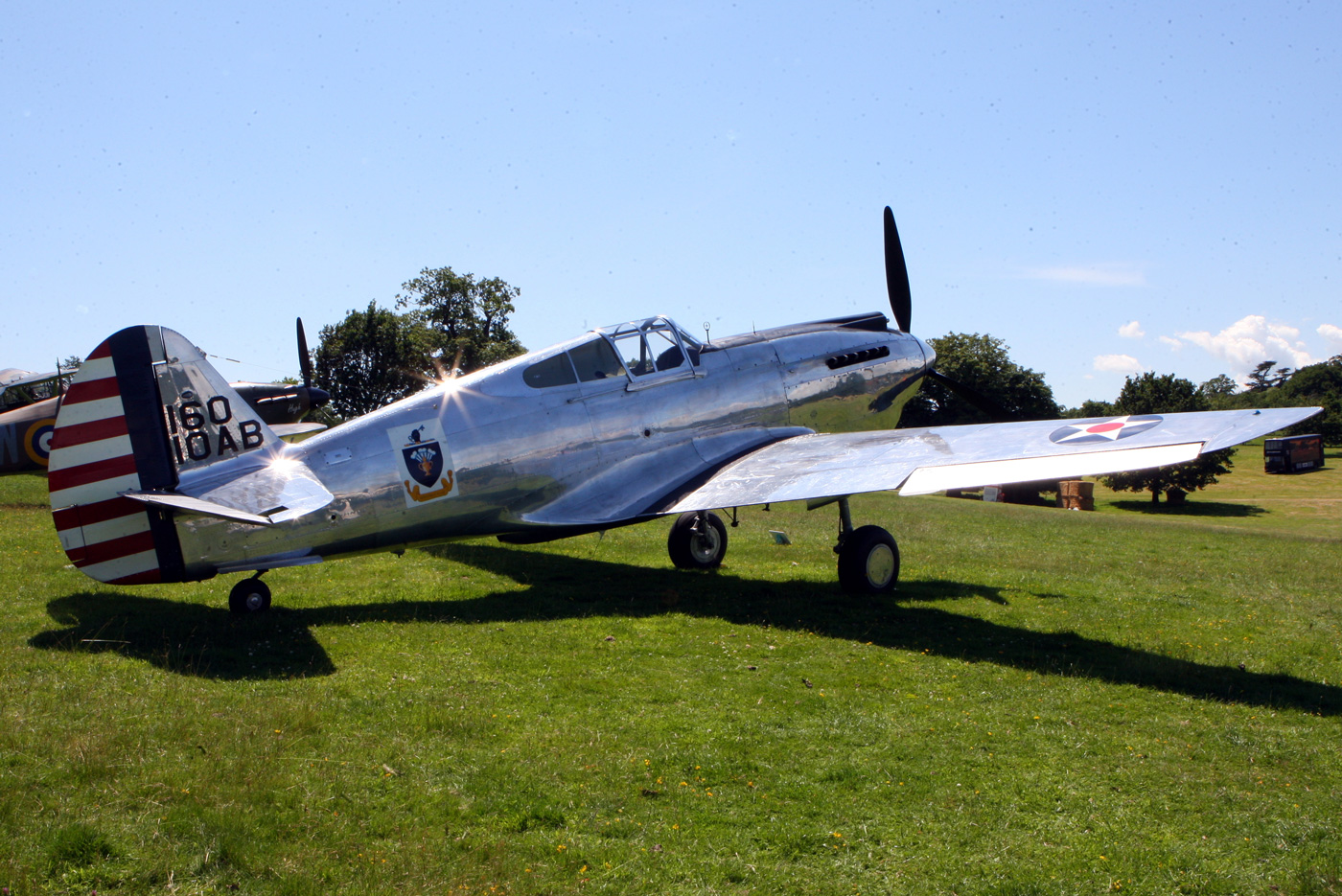
Forming part of Steven Gray’s Fighter collection stable, this Curtiss P40C Warhawk 41-13357 was accepted by the USAAC on the 6th April 1941, initially operating from Patterson Field Ohio. After recording approximately 100 hours of flight time she was shipped to Puerto Rico. After a total of 603 flying hours she was returned to the Curtiss Factory in Buffalo New York to be overhauled for the lend lease program then shipped to USSR in December 1941. From that point the history trail runs out. Recovered from the Soviet Union in the 1990s it was decided during the restoration to finish her in the marks of P40C 39-159 that was stripped of the usual olive drab finish and used as the personal hack of the base commander.
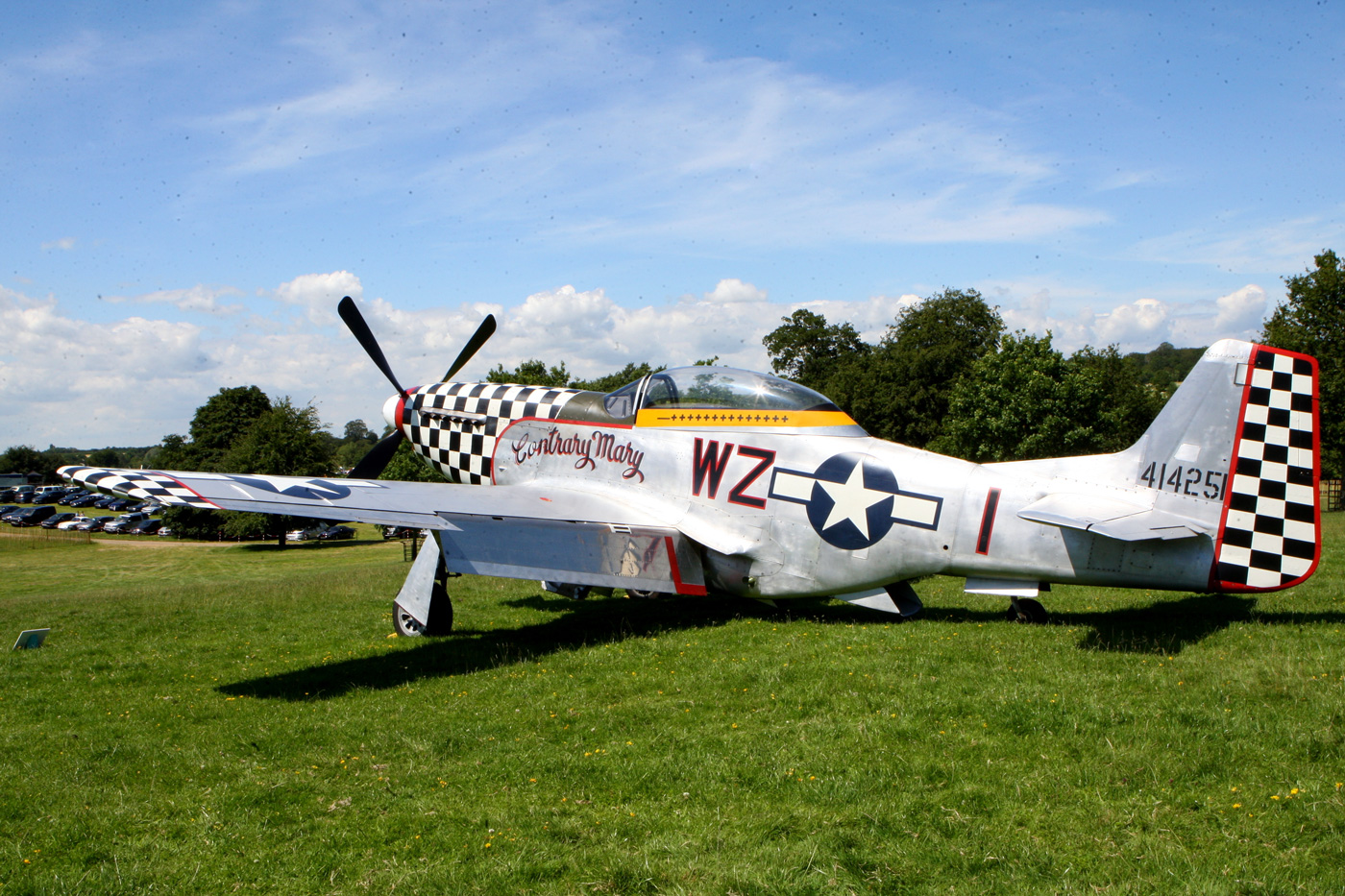
1944 North American TF51 Mustang 44-84847 was one of the last examples built at the North American plant in Dallas. Photographic evidence suggests that she served with the 45th Tactical reconnaissance squadron at Kimpo, South Korea in 1951. Upon returning to the USA she went on to serve with the Air National Guard. Fully restored, she now wears the markings of Lt Col Roy B Caviness of the 84th Fighter Squadron, 78th Fighter Group of the USAAF based at station 357 (Duxford) UK in 1945.
For more on Heveningham Concours

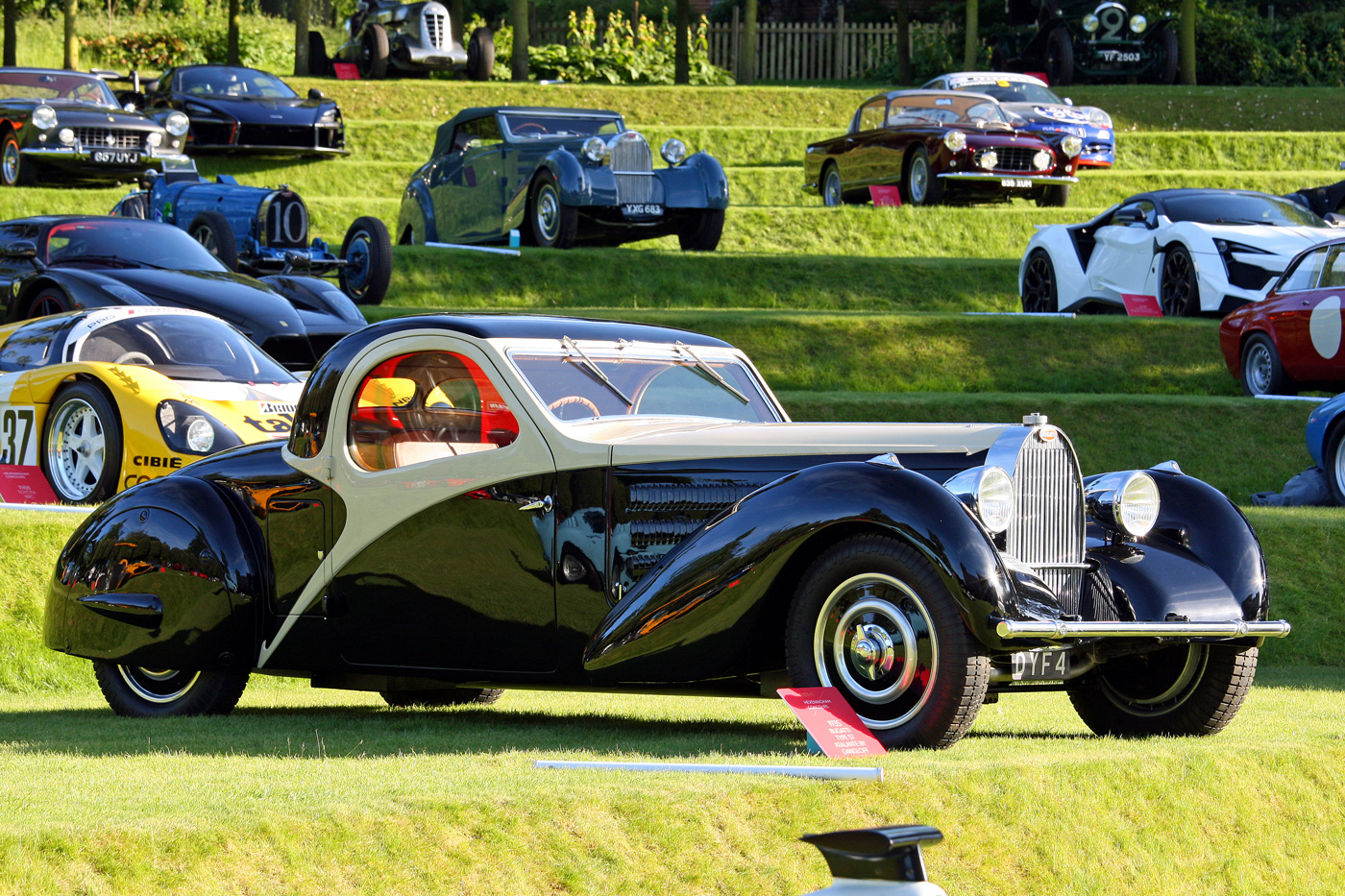
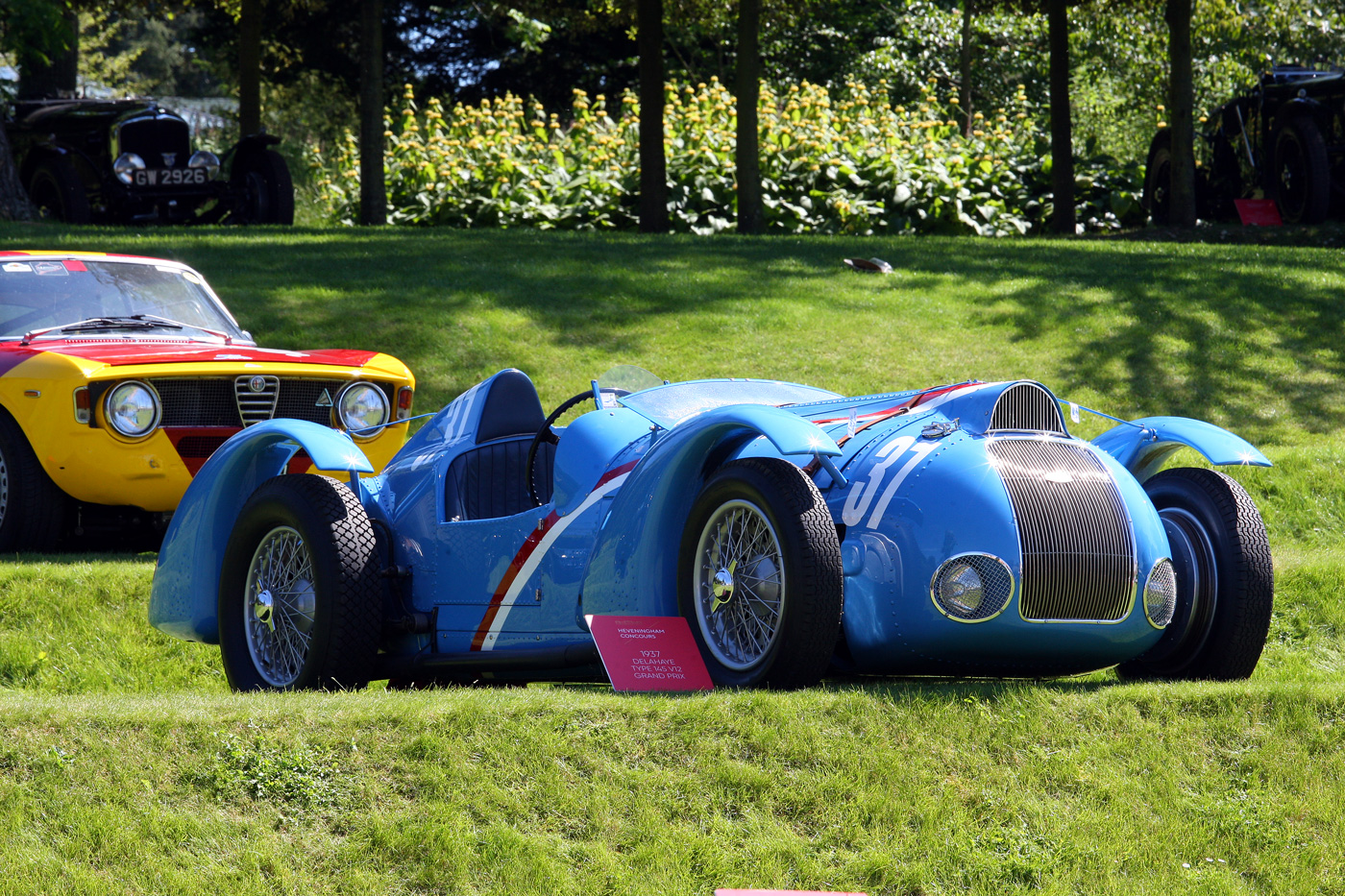
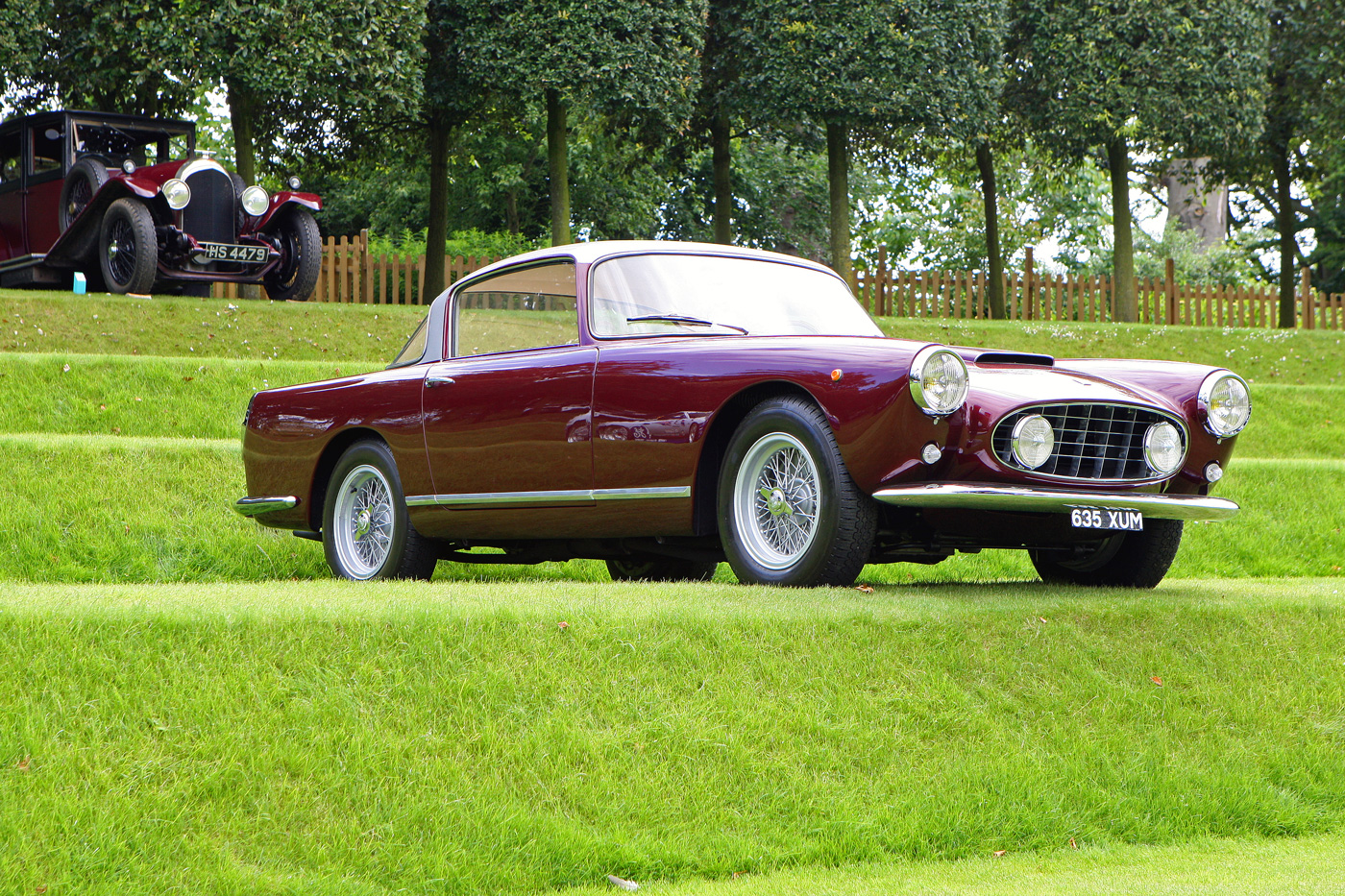
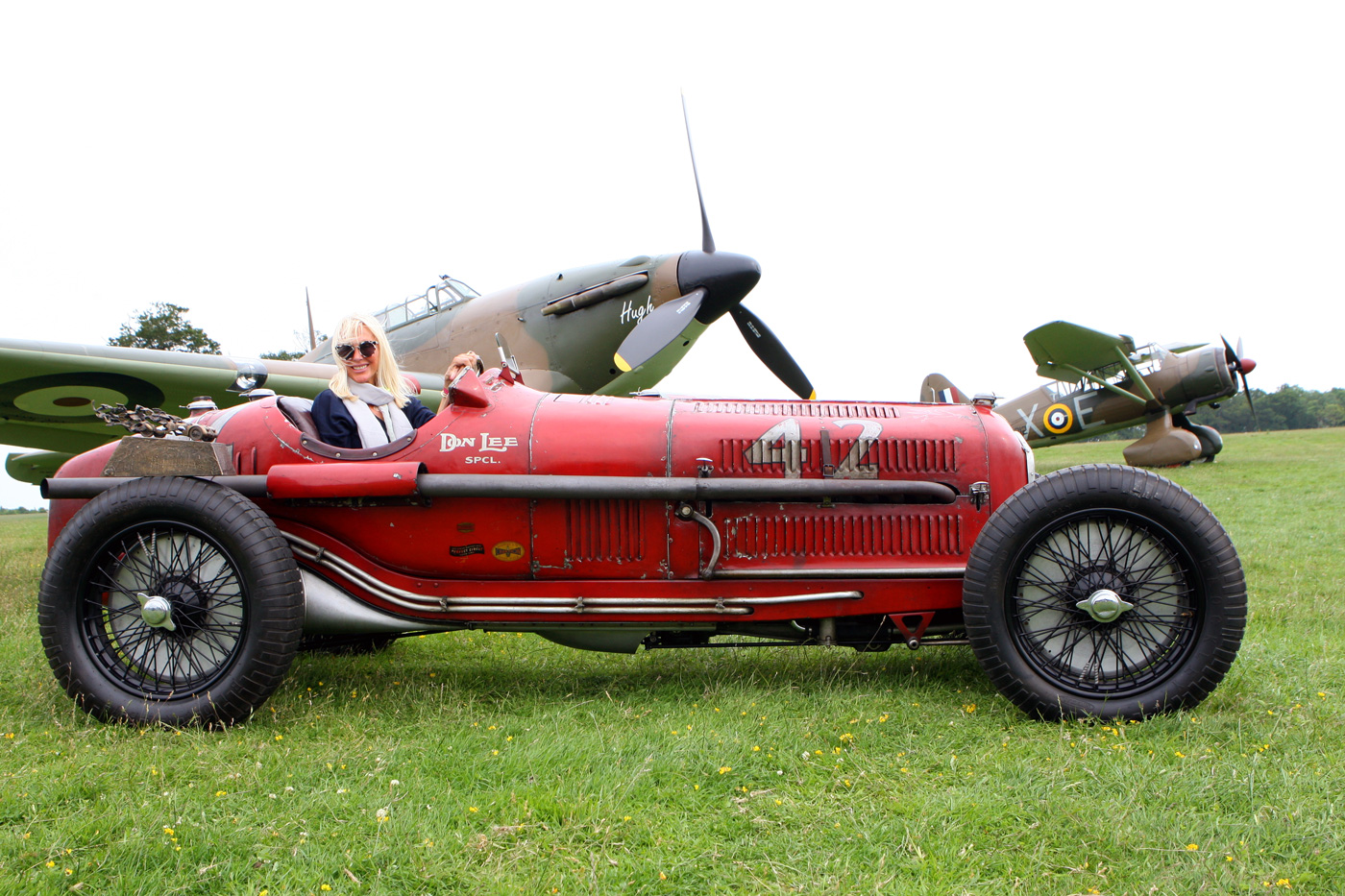
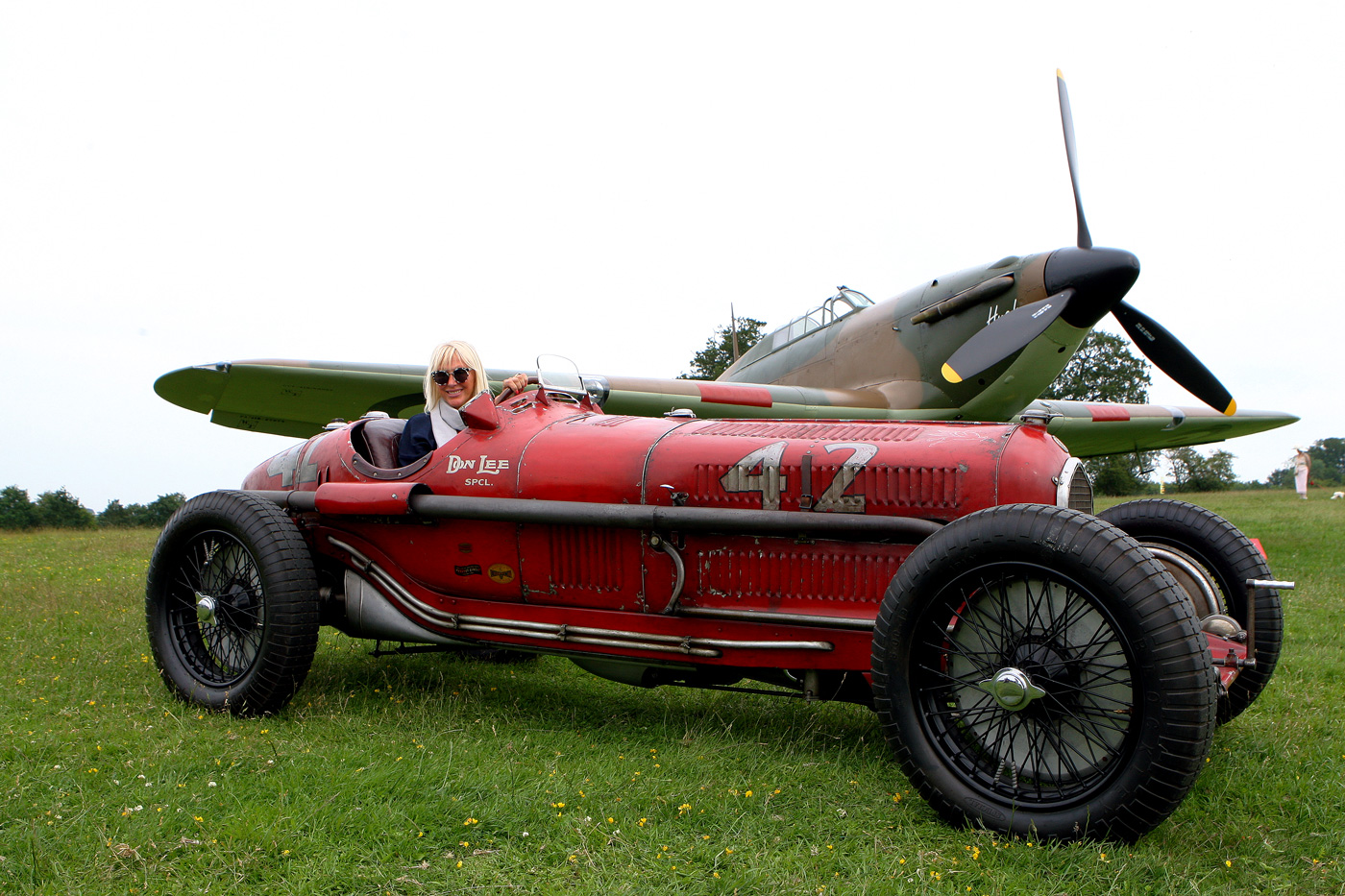
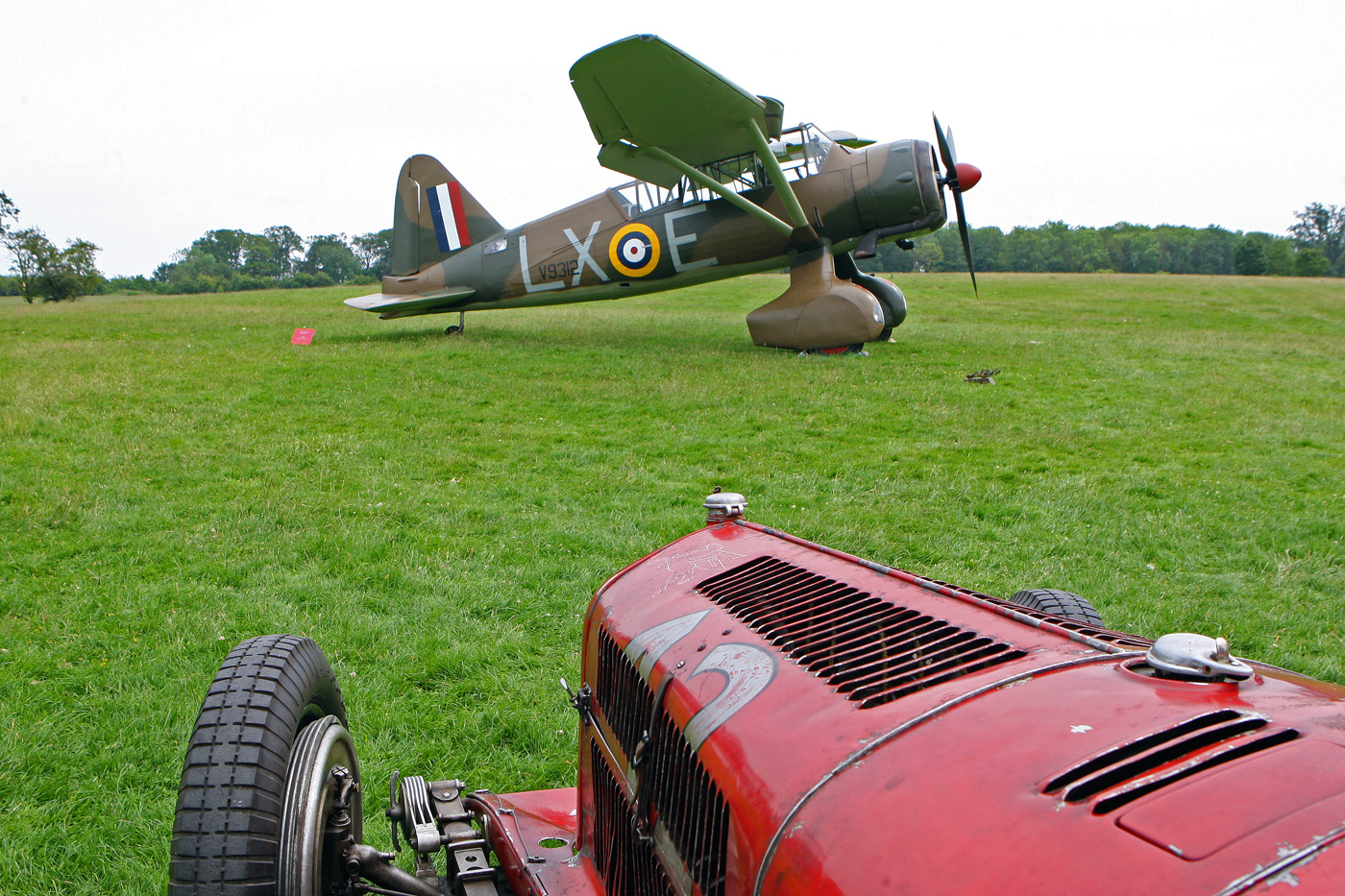
These are among the most amazing car photos……Jonathan Sharp and Hevengham combine for fabulous scenes. The airplanes help too! Terrific!